It looks like you're using an Ad Blocker.
Please white-list or disable AboveTopSecret.com in your ad-blocking tool.
Thank you.
Some features of ATS will be disabled while you continue to use an ad-blocker.
share:
Once you figure out who the "FARMER" is in this Rhyme, and who the "DOG" is, you will say "Bingo!"
Link to children's song
And why do you Clap? Because it symbolizes the Thunder of God.
Why do they call Ouroboros the "tail eater" when it's actually the "guardian of eating"?
Because they probably mean a Tale, which is a Veil hiding the Truth.
The Truth apparently is that "God" = Void / Nothingness / Emptiness / Darkness / Formlessness
And God's Breath/Speech = Light / Substance
1st came God, the Void, the Abyss of Darkness.
2nd came God's Word, the Light.
Genesis 1:
Heavens = Space = Sky = Deep Waters
And Earth = Matter
So Formless Matter means without substance or form.
Dictionary:
Formless
3. Having no material existence.
Link to children's song
There was a farmer who had a dog,
And Bingo was his name-o.
B-I-N-G-O
B-I-N-G-O
B-I-N-G-O
And Bingo was his name-o.
And why do you Clap? Because it symbolizes the Thunder of God.
Why do they call Ouroboros the "tail eater" when it's actually the "guardian of eating"?
Because they probably mean a Tale, which is a Veil hiding the Truth.
The Truth apparently is that "God" = Void / Nothingness / Emptiness / Darkness / Formlessness
And God's Breath/Speech = Light / Substance
1st came God, the Void, the Abyss of Darkness.
2nd came God's Word, the Light.
Genesis 1:
1 In the beginning God created the heavens and the earth.[a] 2 The earth was formless and empty, and darkness covered the deep waters. And the Spirit of God was hovering over the surface of the waters.
3 Then God said, “Let there be light,” and there was light. 4 And God saw that the light was good. Then he separated the light from the darkness. 5 God called the light “day” and the darkness “night.”
edit on 13-9-2013 by muzzleflash because: (no reason
given)
Heavens = Space = Sky = Deep Waters
And Earth = Matter
So Formless Matter means without substance or form.
Dictionary:
Formless
3. Having no material existence.
edit on 13-9-2013 by muzzleflash because: (no reason given)
More about the Conch:
So the Conch is twisting, churning and spinning. The Spiral. (Swastika)
Ok so we are talking about the "Oldest Trumpet" according to these traditions.
Conch = Breath / Voice of God
Protects and Guards the "Pearl" from the "Thieves", (which in this example are demon spirits people believed tormented them).
That's why the Pearl is in the MOUTH of the Lion, because it combined with the other sound symbolism to indicate Voice/Speaking/Breath/Trumpeting.
Link to the Ashtamangala
The Endless Knot
Also see these links for comparison and contrast:
Solomon's Knot
Mandala
Trefoil Knot
Trefoil Knot = Triquetra
The Mysteries of the Pretzel haha ??
In Hinduism the Conch is an attribute of Vishnu as is the Wheel (Sudarshana). Vaishnavism holds that Shakyamuni Buddha is an Avatar of Vishnu.
The conch shell is thought to have been the original horn-trumpet; ancient Indian mythical epics relate heroes carrying conch shells. The Indian god Vishnu is also described as having a conch shell as one of his main emblems; his shell bore the name Panchajanya meaning "having control over the five classes of beings".[3]
So the Conch is twisting, churning and spinning. The Spiral. (Swastika)
Shankha is used as a material for making bangles, bracelets and other objects.[9] Due to its aquatic origin and resemblance to the vulva, it has become an integral part of the Tantric rites. In view of this, its symbolism is also said to represent female fertility. Since water itself is a fertility symbol, shankha, which is an aquatic product is recognised as symbolic of female fertility. In ancient Greece, shells, along with pearls, are mentioned as denoting sexual love and marriage, and also mother goddesses.[7]
Different magic and sorcery items are also closely connected with this trumpet. This type of device existed long before the Buddhist era.
Ok so we are talking about the "Oldest Trumpet" according to these traditions.
Shankha's significance is traced to the nomadic times of the animists who used the sound emanating from this unique shell to drive away evil demons of whom they were scared.[8] The same is still believed in Hinduism.[5] Over the centuries, the shankha was adopted as one of the divine symbols of Hinduism.[8]
Conch = Breath / Voice of God
Protects and Guards the "Pearl" from the "Thieves", (which in this example are demon spirits people believed tormented them).
That's why the Pearl is in the MOUTH of the Lion, because it combined with the other sound symbolism to indicate Voice/Speaking/Breath/Trumpeting.
The sound of the shankha symbolises the sacred Om sound. Vishnu holding the conch represents him as the god of sound.
Link to the Ashtamangala
are a sacred suite of Eight Auspicious Signs endemic to a number of Indian religions such as Hinduism, Jainism, and Buddhism.
Groupings of eight auspicious symbols were originally used in India at ceremonies such as an investiture or coronation of a king. An early grouping of symbols included: throne, swastika, handprint, hooked knot, vase of jewels, water libation flask, pair of fishes, lidded bowl. In Buddhism, these eight symbols of good fortune represent the offerings made by the gods to Shakyamuni Buddha immediately after he gained enlightenment.[3]
The Endless Knot
The endless knot has been described as "an ancient symbol representing the interweaving of the Spiritual path, the flowing of Time and Movement within That Which is Eternal.
Since the knot has no beginning or end it also symbolizes the wisdom of the Buddha.
Also see these links for comparison and contrast:
Solomon's Knot
Because there is no visible beginning or ending, it may represent immortality and eternity—as does the more complicated Buddhist Endless Knot.
Solomon's Knot appears on tombstones and mausoleums in Jewish graveyards and catacombs in many nations. In this context, Solomon's Knot is currently interpreted to symbolize eternity.
Mandala
Mandala (Sanskrit: मण्डल Maṇḍala, 'circle') is a spiritual and ritual symbol in Hinduism and Buddhism, representing the Universe.[1] The basic form of most mandalas is a square with four gates containing a circle with a center point. Each gate is in the general shape of a T.
Trefoil Knot
Trefoil Knot = Triquetra
The Mysteries of the Pretzel haha ??
edit on 13-9-2013 by muzzleflash because: (no reason given)
Fibonacci Number
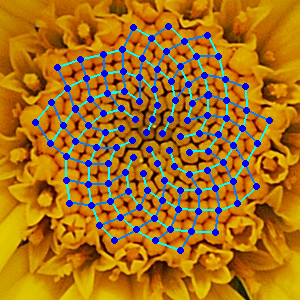
Fermats Spiral
This is a strange symbolism that relates to the above, Three Hares symbolism
Rabbit = Jumping -Rising One, Great Mother, etc, etc.
Also of further interest, check out : Fractals
Michio Kaku quoted :
Universe = Word/Breath/Speech/Song of God
Vibration = Duality
So it's basic Math, E=MC^2
All Matter is Energy in motion, vibrating.
Super String Theory = Harpy Music Theory
Universe = Strings of Harp
Modern Science is quickly coming into agreement with Ancient Knowledge as we rediscover it.
The Tao of Physics: An Exploration of the Parallels between Modern Physics and Eastern Mysticism at Amazon.
The book is really cool, I read it a long time ago and really liked it. Well worth taking a look at for comparing modern physics and ancient wisdom which are extremely similar.
Fibonacci sequences appear in biological settings,[8] in two consecutive Fibonacci numbers, such as branching in trees, arrangement of leaves on a stem, the fruitlets of a pineapple,[9] the flowering of artichoke, an uncurling fern and the arrangement of a pine cone.[10] In addition, numerous poorly substantiated claims of Fibonacci numbers or golden sections in nature are found in popular sources, e.g., relating to the breeding of rabbits in Fibonacci's own unrealistic example, the seeds on a sunflower, the spirals of shells, and the curve of waves.[51] The Fibonacci numbers are also found in the family tree of honeybees.[52]

Fermats Spiral
This is a strange symbolism that relates to the above, Three Hares symbolism
Rabbit = Jumping -Rising One, Great Mother, etc, etc.
Also of further interest, check out : Fractals
Michio Kaku quoted :
What is physics? Physics is nothing but the laws of harmony that you can write on vibrating strings. What is chemistry? Chemistry is nothing but the melodies you can play on interacting vibrating strings. What is the universe? The universe is a symphony of vibrating strings.
Universe = Word/Breath/Speech/Song of God
Vibration = Duality
So it's basic Math, E=MC^2
All Matter is Energy in motion, vibrating.
Super String Theory = Harpy Music Theory
Universe = Strings of Harp
Modern Science is quickly coming into agreement with Ancient Knowledge as we rediscover it.
The Tao of Physics: An Exploration of the Parallels between Modern Physics and Eastern Mysticism at Amazon.
The book is really cool, I read it a long time ago and really liked it. Well worth taking a look at for comparing modern physics and ancient wisdom which are extremely similar.
edit on 13-9-2013 by muzzleflash because: (no reason given)
Conked in the Cochlear Conscience by the Conch of Ents!
Shares the exact same meaning:
So the "Conch of Ents" is your Conscience.
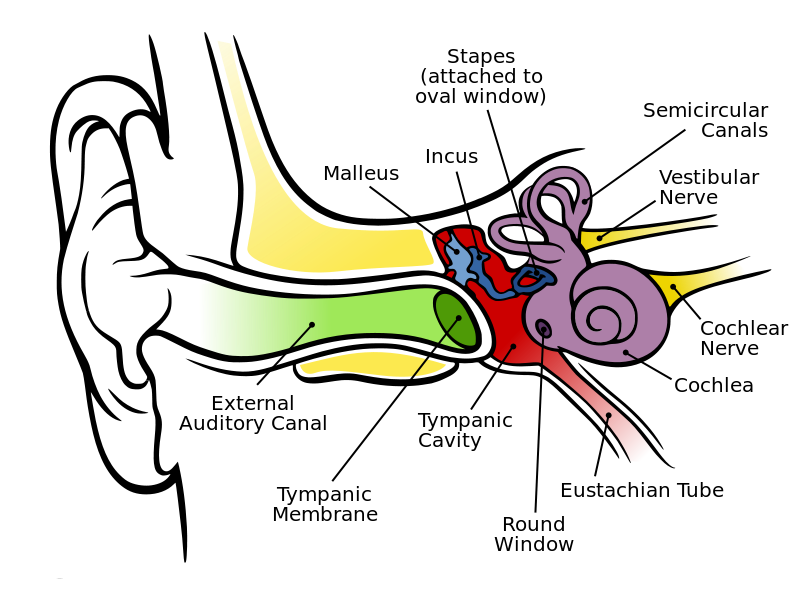
Cochlea, Cochlear Nerve:
The connection between Consciousness and Conch etymologically? Well the first and easiest to find is :
Also:
The King Conk of Conch Ents?
Conch Ent = Spiral Tree
Spiraling Truth
From the Micro as in DNA, or atomic structures.
Or to the Macro such as with the Galaxy and it's spirals.
And what do you know, the name for shells like the Conch is "Strombus" which is apparently Greek for "Spinning or Spiraling".
Strombus
Shares the exact same meaning:
conscience (n.)
early 13c., from Old French conscience "conscience, innermost thoughts, desires, intentions; feelings" (12c.), from Latin conscientia "knowledge within oneself, sense of right, a moral sense," from conscientem (nominative consciens), present participle of conscire "be (mutually) aware," from com- "with," or "thoroughly" (see com-) + scire "to know" (see science).
Probably a loan-translation of Greek syneidesis, literally "with-knowledge." Sometimes nativized in Old English/Middle English as inwit. Russian also uses a loan-translation, so-vest, "conscience," literally "with-knowledge."
So the "Conch of Ents" is your Conscience.

Cochlea, Cochlear Nerve:
cochlea (n.)
"spiral cavity of the inner ear," 1680s, from Latin cochlea "snail shell," from Greek kokhlias "snail, screw," etc., from kokhlos "spiral shell," perhaps related to konkhos "mussel, conch."
The connection between Consciousness and Conch etymologically? Well the first and easiest to find is :
(kŏngk) Conk
n.
The head.
A blow, especially on the head.
Chiefly British. The human nose.
conk (v.)
as in conk out, 1918, coined by World War I airmen, perhaps in imitation of the sound of a stalling motor, reinforced by conk (v.) "hit on the head," originally "punch in the nose" (1821), from conk (n.), slang for "nose" (1812), perhaps from fancied resemblance to a conch (pronounced "conk") shell.
Also:
cockle (n.1)
type of mollusk, early 14c., from Old French coquille (13c.) "scallop, scallop shell; mother of pearl; a kind of hat," altered (by influence of coque "shell") from Vulgar Latin *conchilia, from Latin conchylium "mussel, shellfish," from Greek konkhylion "little shellfish," from konkhe "mussel, conch." Phrase cockles of the heart (1660s) is perhaps from similar shape, or from Latin corculum, diminutive of cor "heart."
The King Conk of Conch Ents?
Conch Ent = Spiral Tree
Spiraling Truth
From the Micro as in DNA, or atomic structures.
Or to the Macro such as with the Galaxy and it's spirals.
And what do you know, the name for shells like the Conch is "Strombus" which is apparently Greek for "Spinning or Spiraling".
Strombus is a genus of medium to large sea snails, marine gastropod molluscs in the family Strombidae, which comprises the true conchs and their immediate relatives.
Strombus
edit on 13-9-2013 by muzzleflash because: (no reason given)
edit on 13-9-2013 by muzzleflash because: (no reason
given)
As we go along through topics randomly in these contexts it will become clear that we encounter various "nexus" concepts that can link us with a
plethora of other concepts.
For example the Hermit Crab.
It is a "nexus" or focal point where many ideas connect.
A "melting pot" of motifs.
Idea = Concept / Prototype / Archetype
Idea = SEE / WID / Know / Vision
Id (psychology) = Instinct / Unconscious / Abyss
Ea = Ya = Ia (Ja) = God
I.D. = Identity shorthand
IDEA = Identity of God = Abyss Within = Vision
ID of EA
That means 'God's Identity is revealed' when you 'enter the Abyss as the Hero'.
You gain vision, concept, ideas. You bring Light into the Dark realms within your mind.
God = All (Pan) therefore All names are the "Name of God".
Knowing anything at all = the I.D. of EA
which is only found within the Id of Ia.
Therefore we have the Hermit Crabs.
Hermit Crabs
PAGUROIDEA is their scientific name.
OURO = (Greek) Watchman Protector
PAG::
Link to "Pagan"
Pango
Sink In?
PAG / SINK IN
+ Uoro / Protector
+ Idea / Concept
PAGUROIDEA = "Protector of the Concept of Sinking"
or " Guardian of the Sinking Concept "
Of course concept = conception and birth, which came from the swirling twisting foam of creation.
And the Hermit Crab's Conch is this exact symbolism.
Holding, Handle, Grabbing, Comprehending, Grasping, Catch, Swallow, Gulp Down, Seize.
Carpe Diem = Seize the Day?
Not exactly, let's investigate.
Carpe means =
carpa = carp the fish.
Harvest Time
Pluck the Day
Split God
Carpe Diem = Janus
Janus is the God of Archways (Arc) and passages, the Carp.
The "Split Dies-Day", Sun Moon cycle and all that.
January the Alpha and Omega.
For example the Hermit Crab.
It is a "nexus" or focal point where many ideas connect.
A "melting pot" of motifs.
idea (n.)
late 14c., "archetype of a thing in the mind of God; Platonic `idea,'" from Latin idea "idea,"
and in Platonic philosophy "archetype," from Greek idea "ideal prototype,"
literally "the look of a thing (as opposed to the reality); form; kind, sort, nature,"
from idein "to see," from PIE *wid-es-ya-,
suffixed form of root *weid- "to see" (see vision).
Idea = Concept / Prototype / Archetype
Idea = SEE / WID / Know / Vision
According to Freud the id is unconscious by definition:
"It is the dark, inaccessible part of our personality,
what little we know of it we have learned from our study of the Dreamwork
and of the construction of neurotic symptoms, and most of that is of a
negative character and can be described only as a contrast to the ego. "
Id (psychology) = Instinct / Unconscious / Abyss
Ea = Ya = Ia (Ja) = God
I.D. = Identity shorthand
IDEA = Identity of God = Abyss Within = Vision
ID of EA
That means 'God's Identity is revealed' when you 'enter the Abyss as the Hero'.
You gain vision, concept, ideas. You bring Light into the Dark realms within your mind.
God = All (Pan) therefore All names are the "Name of God".
Knowing anything at all = the I.D. of EA
which is only found within the Id of Ia.
Therefore we have the Hermit Crabs.
Hermit Crabs
PAGUROIDEA is their scientific name.
OURO = (Greek) Watchman Protector
PAG::
Link to "Pagan"
and ultimately comes from PIE *pag- ("to fix").[11]
Pango
Verb[edit]
present active pango, present infinitive pangere, perfect active pepigi, supine pactum
I fasten, fix, set; drive or sink in.
I set or plant something in the ground.
(figuratively) I settle, determine, agree, conclude, stipulate, fix; pledge.
Sink In?
PAG / SINK IN
+ Uoro / Protector
+ Idea / Concept
PAGUROIDEA = "Protector of the Concept of Sinking"
or " Guardian of the Sinking Concept "
Of course concept = conception and birth, which came from the swirling twisting foam of creation.
And the Hermit Crab's Conch is this exact symbolism.
conceive (v.)
late 13c., conceiven, "take (seed) into the womb, become pregnant,"
from stem of Old French conceveir (Modern French concevoir),
from Latin concipere (past participle conceptus) "to take in and hold; become pregnant,"
from com-, intensive prefix (see com-), + comb. form of capere "to take," from PIE *kap- "to grasp"
(see capable). Meaning "take into the mind" is from mid-14c., a figurative sense also
found in the Old French and Latin words. Related: Conceived; conceiving.
com-
word-forming element usually meaning "with, together," from Latin com,
archaic form of classical Latin cum "together, together with, in combination,"
from PIE *kom- "beside, near, by, with" (cf. Old English ge-, German ge-).
The prefix in Latin sometimes was used as an intensive.
capable (adj.)
1560s, from Middle French capable or directly from Late Latin capabilis
"receptive; able to grasp or hold," used by theologians, from Latin capax
"able to hold much, broad, wide, roomy;" also "receptive, fit for;"
adjectival form of capere "to grasp, lay hold, take, catch; undertake;
take in, hold; be large enough for; comprehend," from PIE *kap- "to grasp"
(cf. Sanskrit kapati "two handfuls;" Greek kaptein "to swallow, gulp down;"
Lettish kampiu "seize;" Old Irish cacht "servant-girl," literally "captive;"
Welsh caeth "captive, slave;" Gothic haban "have, hold;" Old English hæft "handle,"
habban "to have, hold," Modern English have).
Holding, Handle, Grabbing, Comprehending, Grasping, Catch, Swallow, Gulp Down, Seize.
Carpe Diem = Seize the Day?
Not exactly, let's investigate.
Carpe means =
carpo
pluck, carp, enjoy, pick, split, pick off
carpa = carp the fish.
PIE *kerp- "to gather, pluck, harvest" (see harvest (n.)).
dies
day, time, timespan, space of time, lifetime, day-time
Deus Divus
God, Deity, Spirit
Harvest Time
Pluck the Day
Split God
Carpe Diem = Janus
Janus is the God of Archways (Arc) and passages, the Carp.
The "Split Dies-Day", Sun Moon cycle and all that.
January the Alpha and Omega.
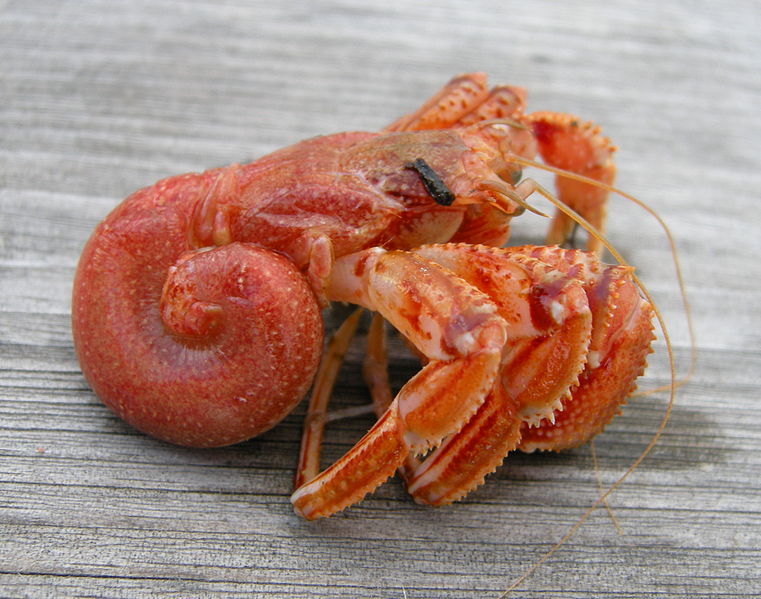
Outside the shell you can see it's rear section is curved and somewhat vulnerable.
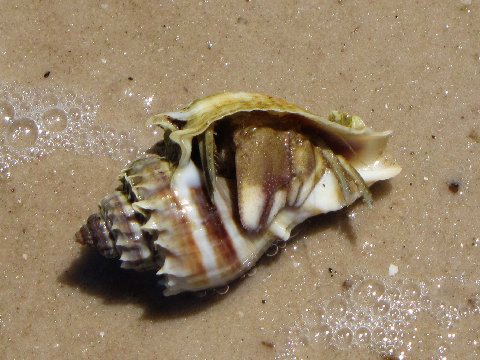
A shell of the Florida crown conch Melongena corona inhabited by a hermit crab
The Cap of the Captive Hermit is the Conch of Ents.
Conception, Connection, the 'Concept of the Abyss Guardian'.
Crabs, Lobsters, Turtles, Eels, Conchs, other types of Shells, Panuroidea.
Protection, Manuverability, Freedom, Hermetic Knowledge.
The "Spiralling Moving House"
aka Celestial Churning Seas above, below, and within.
Thus the constellation of Cancer the Crab/Lobster:
Cancer
Latin cancer "a crab," later, "malignant tumor," from Greek karkinos,
which, like the Modern English word, has three meanings: crab, tumor, and the zodiac constellation
(late Old English), from PIE root *qarq- "to be hard" (like the shell of a crab);
cf. Sanskrit karkatah "crab," karkarah "hard;" and perhaps
cognate with PIE root *qar-tu- "hard, strong," source of English hard.
lobster (n.)
marine shellfish, Old English loppestre "lobster, locust," corruption of Latin locusta, lucusta "lobster, locust," by influence of Old English loppe "spider," a variant of lobbe. The ending of Old English loppestre is the fem. agent noun suffix (cf. Baxter, Webster; see -ster), which approximated the Latin sound.
Lobster = Locust
Perhaps a transferred use of the Latin word;
trilobite fossils in Worcestershire limestone quarries were known colloquially as locusts,
which seems to be the generic word for "unidentified arthropod," as apple is for "foreign fruit."
OED says the Latin word originally meant "lobster or some similar crustacean, the application to the
locust being suggested by the resemblance in shape." Locusta in the sense "lobster" also appears in French (langouste now "crawfish, crayfish," but in Old French "lobster" and "locust;" a 13c. psalter has God giving over the crops of Egypt to the langoustes) and Old Cornish (legast).
sea-lion (n.)
c.1600, "kind of lobster," from sea + lion. Later the name of a fabulous animal (in heraldry, etc.), 1660s. Applied from 1690s to various species of large eared seals.
So the first Sea-Lion was a Lobster/Locust?
Sea-Lions in Heraldry
Merlions
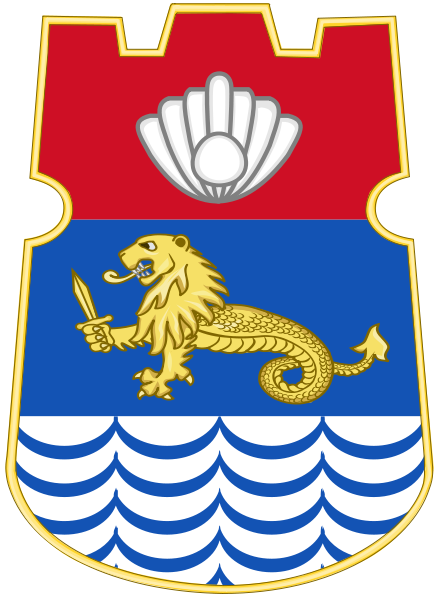
At the moment, the Sea-lion is prominent in the Philippines, where it features on the coat-of-arms of its capital, primatial see, and its President's Seal.
The Pearl, the Shell, the Sea-Lion, and the Hermit Crab.
Merlion = Lobster = Locust = Lion-Serpent = Chimera
Remember the Lion-Serpent discussed earlier?

Merlion is the symbol of Singapore, the Lion City.
The English name of Singapore is derived from the Malay word Singapura (Sanskrit: सिंहपुर, literally Lion City), hence the customary reference to the nation as the Lion City.
Chola vs Chela
Chola Dynasty
Chela = Claw / Cleave
chelate (adj.)
"having pincer-like claws," 1826 as a term in zoology;
1920 in chemistry, from Modern Latin chela "claw" (from Greek khele "claw, talon, cloven hoof;"
see chelicerae) + -ate (2). Related: Chelated; chelating; chelation.
Who is the Claw/Talon/Hand/Palm of God? It's the Divider, the one that cleaves or slices in two?
Carpe Diem?
Chela = In Occult terminology means "Seeker of Knowledge".
The "Chela" cleaves in two, separating the false from true.
The "Sword" of God:
Excalibur (n.)
King Arthur's sword, c.1300, from Old French Escalibor,
corruption of Caliburn, in Geoffrey of Monmouth (c.1140) Caliburnus,
apparently from Welsh Caledvwlch probably a variant of the legendary Irish sword name Caladbolg
which may be literally "hard-belly," i.e. "voracious." For first element, see callus; for second,
see belly (n.).
Caliburnus, the Voracious One that Cleaves All Things.
The Piercing or Swearing of the Chela.
Swearing = Sword = Sacred Word of Chela Seeking Knowledge
sword (n.)
Old English sweord, from Proto-Germanic *swerdan
(cf. Old Saxon, Old Frisian swerd, Old Norse sverð, Swedish svärd, Middle Dutch swaert,
Dutch zwaard, Old High German swert, German Schwert), related to Old High German sweran "to hurt,"
from *swertha-, literally "the cutting weapon," from PIE root *swer- (3) "to cut, pierce."
swear (v.)
Old English swerian "take an oath" (class VI strong verb; past tense swor, past participle sworen),
from Proto-Germanic *swarjan-, (cf. Old Saxon swerian, Old Norse sverja, Danish sverge, Old Frisian swera, Middle Dutch swaren, Old High German swerien, German schwören, Gothic swaren "to swear"),
from PIE root *swer- (1) "to speak, talk, say" (cf. Old Church Slavonic svara "quarrel").
Also related to the second element in answer. The secondary sense of "use bad language" (early 15c.)
developed from the notion of "invoke sacred names."
So therefore the Chela is the Swearing Sword of God, that Flaming Sword of Kali, Caliburnus-Excaliber.
The Claw of the Locust.
glaive (v.)
late 13c., used in Middle English of various weapons,
from Old French glaive "lance, spear, sword," also figuratively used for "violent death"
(12c.), from Latin gladius "sword" (see gladiator); influenced by clava "knotty branch, cudgel, club,"
related to clavus "nail."
The Nail that Binds, Cancer the Clinger. '
Nails in the Palms.
The Spear of Destiny aka the Holy Lance.
The Spear in the Belly of Christ.
Sword/Swore = Divide = Cross of Christ
Story of Creation over and over again.
nail (n.)
Old English negel "metal pin," nægl "fingernail (handnægl), toenail,"
from Proto-Germanic *naglaz (cf. Old Norse nagl "fingernail,"
nagli "metal nail;" Old Saxon and Old High German nagel, Old Frisian neil,
Middle Dutch naghel, Dutch nagel, German Nagel "fingernail, small metal spike"),
from PIE root *(o)nogh "nail" (cf. Greek onyx "claw, fingernail;" Latin unguis "nail, claw;"
Old Church Slavonic noga "foot," noguti "nail, claw;" Lithuanian naga "hoof," nagutis "fingernail;"
Old Irish ingen, Old Welsh eguin "nail, claw").
The Nail of God is the Claw, the Chela / Sword / Spear / Tooth / Hoof
Naga = Serpent which Crawls
Therefore we have "Craw Fish" the "Craw Dad".
In Sanskrit, a nāgá (नाग) is a cobra, a specific type of snake (hooded snake). A synonym for nāgá is phaṇin (फणिन्). There are several words for "snake" in general, and one of the very commonly used ones is sarpá (सर्प). Sometimes the word nāgá is also used generically to mean "snake".[1][2] The word is cognate with English 'snake', Germanic: *snēk-a-, Proto-IE: *(s)nēg-o-.[3]
The Hooded Snake, Crawling Dad of All Creation.
crawl (v.)
c.1200, creulen, from a Scandinavian source, perhaps Old Norse krafla "to claw (one's way),"
from the same root as crab (n.1). If there was an Old English *craflian, it has not been recorded.
Related: Crawled; crawling.
reptile (n.)
late 14c., "creeping or crawling animal," from Old French reptile (early 14c.)
and directly from Late Latin reptile, noun use of neuter of reptilis (adj.) "creping, crawling,"
from rept-, past participle stem of repere "to crawl, creep," from PIE root *rep- "to creep, crawl"
(cf. Lithuanian replioju "to creep").
Which is the Creopan, the Crawling One, the Creator(Creo) of All(Pan).
This is the Crab, the Lobster, the Turtle, the Scorpion.
The Hermit that lives in the Conch is a great nexus of doorways to all sorts of revelations.
Paguroidea - the Abyss Guarding your Ideas.
Apollyon, Apollo the Sun as it sinks over the horizon into the Abyss.
Conch = Spiral Stairway to Heaven
Jacob's Ladder into the Sky
Jacob's Ladder
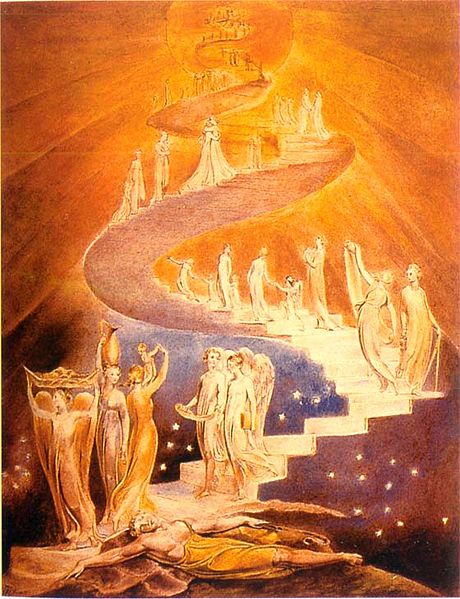
Jacob's Ladder by William Blake (c. 1800, British Museum, London)
This revelation occurred in a dream after he put the Stone of Jacob to his head.
After waking up, Jacob exclaimed: "This is none other than the house of God, and this is the gate of heaven!" Subsequently, he called the place Bet-El, which translates to "House of God".
The House of God = Spiral Staircase = Shell of the Hermit Crab = Conch (Loud Message)
Make it your home for Protection and Safety = General Motif
reply to post by hellnotes
The real matrix is orchestrated and begins in the higher realms my friend - As above, so Below.
When I say activate the spirit body; yes it means of the Merkaba, but its also Kundalini activation, which is the powerful life force that is slumber in your lowest chakra center. Anyone who has had the kundalini experience, will know how powerful and profound the experience is. Once you do awaken or activate this energy, you must learn how to circulate it through the energy centers (chakras). It can cause serious damage if you are not equipped, meaning; balanced and buffered in all your 7 main chakras.
What I mean by geometric shapes is very complex, and I do not have time nor the care to type that all out. Its really something you will need to research, basically I refered to sacred geometry, and how they construct REALITIES. Like the human being is the pentagram, which is PHI (PHIVE), look into Leo DaVinci's drawings of man, and you will see him describing the pentagram within a circle.
The real matrix is orchestrated and begins in the higher realms my friend - As above, so Below.
When I say activate the spirit body; yes it means of the Merkaba, but its also Kundalini activation, which is the powerful life force that is slumber in your lowest chakra center. Anyone who has had the kundalini experience, will know how powerful and profound the experience is. Once you do awaken or activate this energy, you must learn how to circulate it through the energy centers (chakras). It can cause serious damage if you are not equipped, meaning; balanced and buffered in all your 7 main chakras.
What I mean by geometric shapes is very complex, and I do not have time nor the care to type that all out. Its really something you will need to research, basically I refered to sacred geometry, and how they construct REALITIES. Like the human being is the pentagram, which is PHI (PHIVE), look into Leo DaVinci's drawings of man, and you will see him describing the pentagram within a circle.
Japanese Zelkova
Bonsai
Penjing
Bonsai Trees
Banzai Exclamation = God/Ruler = Charge / Pierce / Call Out
"Ten Thousand Years"
Alchemy of the Soul through Pruning of the Sacred Tree of God.
Gongshi
Scholar's Stones of the East.

Chinese Alchemy through Art.
The Art of the Sacred Garden, the Chinese Garden where one may find answers within themselves, and balance between dividing forces.

Pass through the Gateway (You need a Boat in the Underworld).
River Styx = Sticks

You know that Sacred Mystical Boat ? (See Vikings, Egyptians, etc)
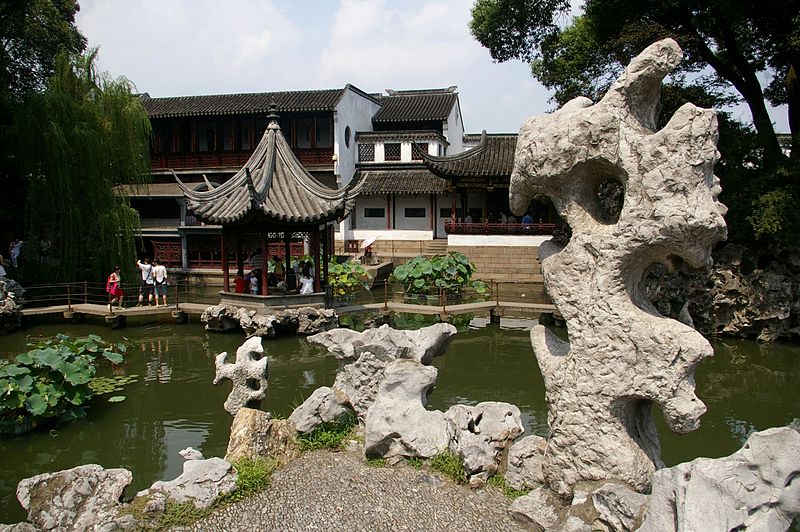
The Grove of the Sea-Lion
What about other forms of Alchemy through Artwork in the East?
Mogu Painting
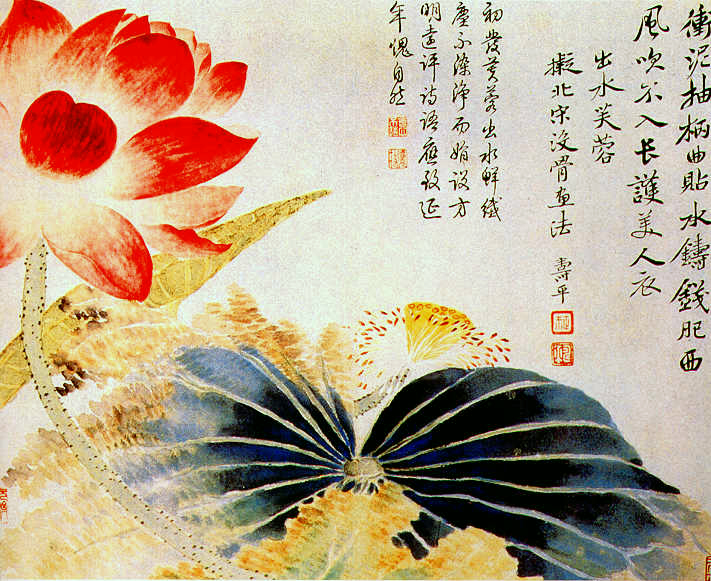
The mysteries of the Sacred Lotus.
Bird-and-Flower Painting
Bamboo Painting
So Chinese philosophy and Chinese Art go hand in hand, just as it does everywhere else in the world.
Most people don't realize this because they don't know much philosophy.
Let us now look at the Shan Shui
AKA Sacred Alchemy of the Spirit.
Shan Shui Poetry
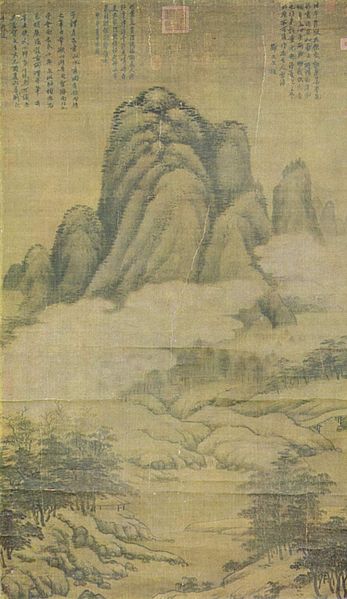
Mastery over the Five Elements of Chinese Philosophy.
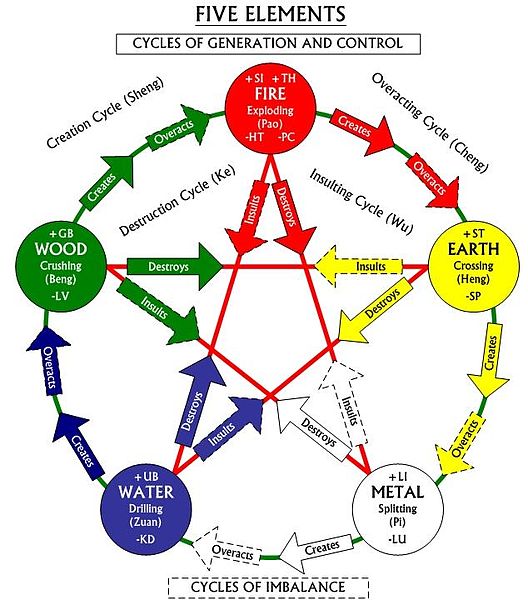
Wu Xing
And thus we have the well known Art of Feng Shui
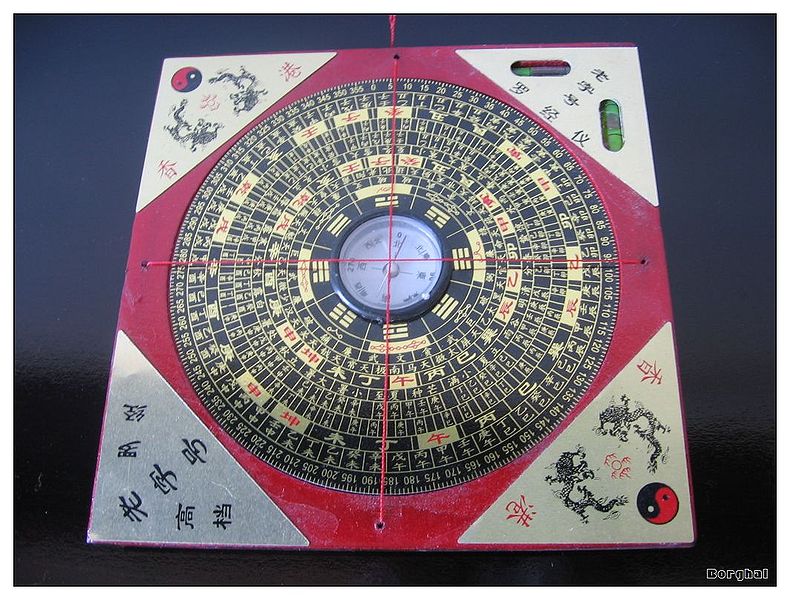
The Luopan or Feng Shui Compass.
Hopefully this symbolism will be familiar to everyone following along this far.
We will come back to this later in more depth / other contexts but wanted to get this post on Alchemy of the East up for the time being.
Bonsai
Penjing
Bonsai Trees
Banzai Exclamation = God/Ruler = Charge / Pierce / Call Out
"Ten Thousand Years"
Bonsai (盆栽?, lit. plantings in tray, from bon, a tray or low-sided pot and sai, a planting or plantings, About this sound pronunciation (help·info))[1] is a Japanese art form using miniature trees grown in containers. Similar practices exist in other cultures, including the Chinese tradition of penjing from which the art originated, and the miniature living landscapes of Vietnamese hòn non bộ. The Japanese tradition dates back over a thousand years, and has its own aesthetics and terminology.
Alchemy of the Soul through Pruning of the Sacred Tree of God.
These creations of carefully pruned trees and rocks are small-scale renditions of natural landscapes. They are often referred to as living sculptures or as three-dimensional poetry. Their artistic composition captures the spirit of nature and distinguishes them from ordinary potted plants.
Gongshi
Scholar's Stones of the East.
In the Tang dynasty, a set of four important qualities for the rocks were recognized. They are: thinness (shou), openness (tou), perforations (lou), and wrinkling (zhou).[1]
Chinese scholar's rocks influenced the development of Korean suseok and Japanese suiseki.[3]

Chinese Alchemy through Art.
The Art of the Sacred Garden, the Chinese Garden where one may find answers within themselves, and balance between dividing forces.

Pass through the Gateway (You need a Boat in the Underworld).
River Styx = Sticks

The Marble Boat pavilion in the garden of the Beijing Summer Palace (1755)
You know that Sacred Mystical Boat ? (See Vikings, Egyptians, etc)

The Lion Grove Garden in Suzhou (1342), known for its fantastic and grotesque rocks
The Grove of the Sea-Lion
What about other forms of Alchemy through Artwork in the East?
Mogu Painting

Yun Shouping's Mogu painting: Lotus Flower Breaking the Surface
The mysteries of the Sacred Lotus.
Bird-and-Flower Painting
According to Chinese tradition, bird-and-flower painting covers "flowers, birds, fish, and insects" (Traditional Chinese: 花鳥魚蟲, Simplified Chinese: 花鸟鱼虫 huā, niǎo, yú, chóng). It can thus deal with a wide range of natural topics, including flowers (plants), fish, insects, birds, pets (dogs, cats) etc.
Bamboo Painting
From the days of their common origin, Chinese painting and Chinese writing have been allied arts. They use the same equipment and share aims, techniques, and standards. Ever since the beginning, bamboo has been written and also been painted in the same manner, in other words, a work depicting bamboo is both a painting and a piece of calligraphy. There are so-called “bamboo painters” who all their lives paint only bamboo. The bamboo is strong, upright, and dependable. He may bend with the wind, the storm and the rain, but he never breaks. He is a true gentleman of courage and endurance (Ju 1989).
So Chinese philosophy and Chinese Art go hand in hand, just as it does everywhere else in the world.
Most people don't realize this because they don't know much philosophy.
Let us now look at the Shan Shui
According to Ch'eng Hsi:
Shan shui painting is a kind of painting which goes against the common definition of what a painting is. Shan shui painting refutes color, light and shadow and personal brush work. Shan shui painting is not an open window for the viewer's eye, it is an object for the viewer's mind. Shan shui painting is more like a vehicle of philosophy.[5]
AKA Sacred Alchemy of the Spirit.
Shan Shui Poetry

Mastery over the Five Elements of Chinese Philosophy.
The Wu Xing, (五行 wŭ xíng) also known as the Five Elements, Five Phases, the Five Agents, the Five Movements, Five Processes, and the Five Steps/Stages, is a fivefold conceptual scheme that many traditional Chinese fields used to explain a wide array of phenomena, from cosmic cycles to the interaction between internal organs, and from the succession of political regimes to the properties of medicinal drugs.

Wu Xing
After it came to maturity in the second or first century BCE during the Han dynasty, this device was employed in many fields of early Chinese thought, including seemingly disparate fields such as geomancy or Feng shui, astrology, traditional Chinese medicine, music, military strategy and martial arts. The system is still used as a reference in some forms of complementary and alternative medicine and martial arts.
And thus we have the well known Art of Feng Shui

The Luopan or Feng Shui Compass.
Hopefully this symbolism will be familiar to everyone following along this far.
Feng shui (UK Listeni/ˌfɛŋ ˈʃuːi/;[1] US /fʌŋ ʃweɪ/;[2] pinyin: fēng shuǐ, pronounced [fɤ́ŋ ʂwèi] ( listen)) is a Chinese philosophical system of harmonizing the human existence with our surrounding environment. Feng Shui is one of the Five Arts of Chinese Metaphysics, classified as Physiognomy (observation of appearances through formulas and calculations). The Feng Shui practice was created so humans can work with the omnipresent invisible forces that bind the Universe, Earth, and man together, known as Qi/Chi/Energy.
The term feng shui literally translates as "wind-water" in English. This is a cultural shorthand taken from the passage of the now-lost Classic of Burial recorded in Guo Pu's commentary:[5]
Qi rides the wind and scatters, but is retained when encountering water.[5]
We will come back to this later in more depth / other contexts but wanted to get this post on Alchemy of the East up for the time being.
edit
on 14-9-2013 by muzzleflash because: (no reason given)
edit on 14-9-2013 by muzzleflash because: (no reason
given)
edit on 14-9-2013 by muzzleflash because: (no reason given)
Tansu
Cabinet / Chest
Shell of the Hermit Crab
Chest of Vishnu = Pearl of the Shell
Venus = Pearl (You)
Inside Treasure Chest of God is the Priceless Pearl.
Qi is the Key to Unlock the Shell.
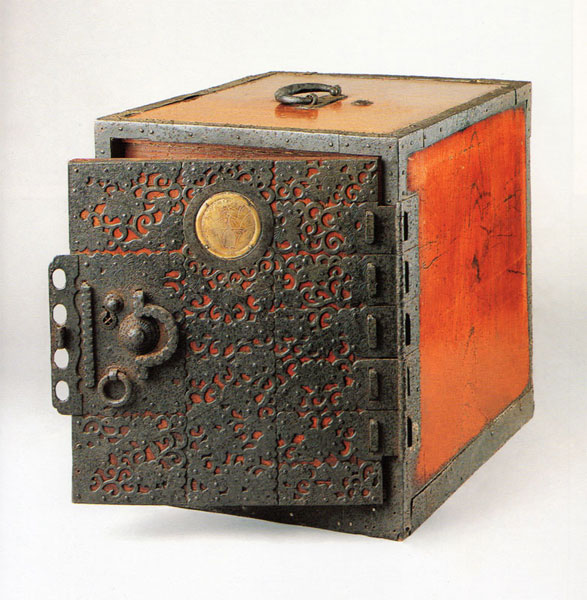
Funa Dansu "Chest of the Ship".
Seals? Symbols? like the Seal of the Sea-Lion?
Charts? Like a Map to find your way Home?
All of these treasures of knowing and wealth are found where?
In the SACRED CUBE - the CHEST of GOD.
That is why they have the symbol of the Clam Opening on the Kaaba,
because it represents the birth mother / abyss opening.
It's telling you the treasure/pearl is within the Sacred Cube/Treasure Chest.
The Opening of the Clam / Abyss is called the Black Stone because again, we are talking about Pearls here.
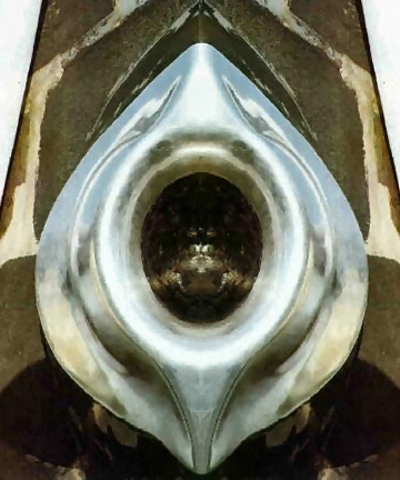
Black Stone in the Kaaba
Pearl in the Chest of God
That Treasure Chest of Peril marked on the map by the X.
The Star Canopus
Canopus Greek Mythology
So Canopus is the "High One", the "Pilot of the Ship", the "Man at the Wheel".
Thus we have the Canopy of the Tree, the Parasol or Umbrella revered found throughout many cultures worldwide.
Why is the Umbrella so important? It's the Tree, the Canopy.
The Protector or Guardian.
Also notice the Duality of Names:::
Polaris = Rising Pole
Canopus = Snake Work (Can = Snake , Opus= Work)
Now let's think of the Connotations with Pirates::
Pearl - Peril - Pear of El - Pair of El - Parallel
So Peril = Danger, Watcher, Risk
Thus brings us to the Sacred Pear (Pair) Tree:
Pear Tree
Pair = Pear = Pearl = Peril
Divide = Divine = Dice = Day (Sun and Moon) = 0 and 1
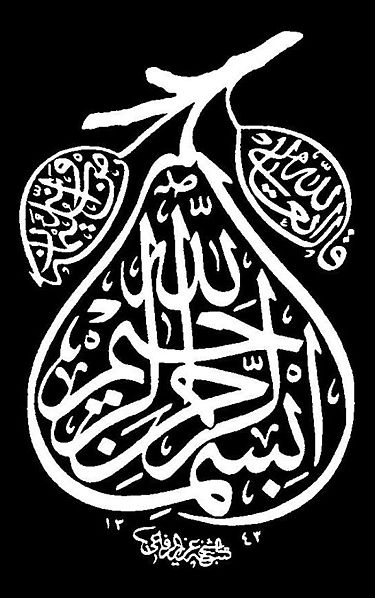
The "Name of God" symbolized through the PEAR (Pair thus duality in the artwork).
Basmala
Now Let's put a Partridge into this Pair Tree = Part the Ridge
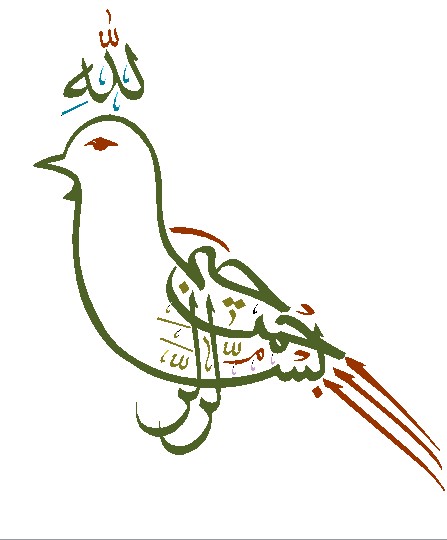
This is also symbolic for Basmala - the Name of God.
Part the Ridge of the Pair Tree 12 Times.
The Partridge nests on the Earth levels, rather than in the "high places", and it avoids flying too high mindful of the "FALL", Perdix, Icarus, the fallen one.
It's the Feathers/Bird + the Ground/Crawl = Sky + Earth = Feathered Serpent
You say it 12 Times because every sign of the Zodiac is a Chimeric aspect of the Golden Feathered Serpent.
Sun = Goes above and below every day = Sky and Earth = Rising and Sitting God
Twelve Days of Christmas
Calling Birds - Colored Birds - Curly Birds - Black Birds = Harpies Harping
This variant is also interesting with it's symbolism.
Cabinet / Chest
Shell of the Hermit Crab
Chest of Vishnu = Pearl of the Shell
Venus = Pearl (You)
Inside Treasure Chest of God is the Priceless Pearl.
Qi is the Key to Unlock the Shell.

"Kakesuzuri funa dansu were Edo period shipboard chests for seals, money, charts and documents."
Funa Dansu "Chest of the Ship".
Seals? Symbols? like the Seal of the Sea-Lion?
Charts? Like a Map to find your way Home?
All of these treasures of knowing and wealth are found where?
In the SACRED CUBE - the CHEST of GOD.
That is why they have the symbol of the Clam Opening on the Kaaba,
because it represents the birth mother / abyss opening.
It's telling you the treasure/pearl is within the Sacred Cube/Treasure Chest.
The Opening of the Clam / Abyss is called the Black Stone because again, we are talking about Pearls here.

Black Stone in the Kaaba
Pearl in the Chest of God
That Treasure Chest of Peril marked on the map by the X.
Al-Ħajaru l-Aswad, "the Black Stone", is located in the Kaaba's eastern corner. Its northern corner is known as the Ruknu l-ˤĪrāqī, "the Iraqi corner", its western as the Ruknu sh-Shāmī, "the Levantine corner", and its southern as Ruknu l-Yamanī "the Yemeni corner".[1][6] The four corners of the Kaaba roughly point toward the four cardinal directions of the compass.[1] Its major (long) axis is aligned with the rising of the star Canopus toward which its southern wall is directed, while its minor axis (its east-west facades) roughly align with the sunrise of summer solstice and the sunset of winter solstice.[7][8]
The Star Canopus
To anyone living in the northern hemisphere, but far enough south to see the star, it served as a southern pole star. This lasted only until magnetic compasses became common.
To the Bedouin people of the Negev and Sinai, Canopus is known as Suhayl. It and Polaris are the two principal stars used for navigation at night. Due to the fact that it disappears below the horizon, it became associated with a cowardly or changeable nature, as opposed to always-visible Polaris, which was circumpolar and hence 'steadfast'.[35]
The Maori people of New Zealand/Aotearoa had several different names for Canopus. Ariki ("High-born"), was known as a solitary star that appeared in the east, prompting people to weep and chant.[25] They also named it Atutahi, Aotahi or Atuatahi, "Stand Alone".[26]
An Egyptian priestly poet of the time of Thutmose III wrote of it as Karbana, "the star which pours his light in a glance of fire, When he disperses the morning dew."[15]
Canopus Greek Mythology
In Greek mythology, Canopus (or Canobus) was the pilot of the ship of King Menelaus of Sparta during the Trojan War.
One from the legend of the Trojan War, where the constellation Carina was once part of the now-obsolete constellation of Argo Navis, which represented the ship used by Jason and the Argonauts. The brightest star in the constellation was given the name of a ship's pilot from another Greek legend: Canopus, pilot of Menelaus' ship on his quest to retrieve Helen of Troy after she was taken by Paris.
So Canopus is the "High One", the "Pilot of the Ship", the "Man at the Wheel".
Thus we have the Canopy of the Tree, the Parasol or Umbrella revered found throughout many cultures worldwide.
Why is the Umbrella so important? It's the Tree, the Canopy.
The Protector or Guardian.
Also notice the Duality of Names:::
Polaris = Rising Pole
Canopus = Snake Work (Can = Snake , Opus= Work)
Now let's think of the Connotations with Pirates::
Pearl - Peril - Pear of El - Pair of El - Parallel
pirate (n.)
c.1300 (mid-13c. as a surname), from Latin pirata "sailor, corsair, sea robber"
(source of Spanish, Italian pirata, Dutch piraat, German Pirat), literally "one who attacks (ships),"
from Greek peirates "brigand, pirate," literally "one who attacks," from peiran "to attack,
make a hostile attempt on, try," from peira "trial, an attempt, attack," from PIE root *per- "try"
(cf. Latin peritus "experienced," periculum "trial,
experiment; attempt on or against; enterprise;" see peril).
pearl (n.)
mid-13c., from Old French perle (13c.) and directly from Medieval Latin perla (mid-13c.),
of unknown origin. Perhaps from Vulgar Latin *pernula, diminutive of Latin perna,
which in Sicily meant "pearl," earlier "sea-mussel," literally "ham, haunch, gammon,"
so called for the shape of the mollusk shells.
Other theories connect it with the root of pear,
also somehow based on shape, or Latin pilula "globule," with dissimilation.
The usual Latin word for "pearl" was margarita (see margarite).
peril (n.)
c.1200, from Old French peril "danger, risk" (10c.),
from Latin periculum "an attempt, trial, experiment; risk, danger,"
with instrumentive suffix -culum and element also found in experiri "to try,"
cognate with Greek peria "trial, attempt, experience," empeiros "experienced,"
Old Irish aire "vigilance," Gothic ferja "watcher," Old English fær "danger, fear" (see fear (n.)).
So Peril = Danger, Watcher, Risk
Thus brings us to the Sacred Pear (Pair) Tree:
The English word “pear” is probably from Common West Germanic pera,
probably a loanword of Vulgar Latin pira, the plural of pirum, akin to Greek ?p??? apios
(from Mycenaean ápisos),[2] which is of Semitic origin (Aramaic/Syriac "pirâ", meaning "fruit",
from the verb "pra", meaning "to beget, multiply, bear fruit"). The place name Perry and Pharisoulopol
can indicate the historical presence of pear trees. The term "pyriform" is sometimes used to describe
something which is pear-shaped.
Pear Tree
Pair = Pear = Pearl = Peril
Divide = Divine = Dice = Day (Sun and Moon) = 0 and 1

Calligraphy of the "Basmala" phrase bismi-llāhi ar-raħmāni ar-raħīmi بسم الله الرحمن الرحيم in the form of a pear
The "Name of God" symbolized through the PEAR (Pair thus duality in the artwork).
Basmala
Now Let's put a Partridge into this Pair Tree = Part the Ridge

This is also symbolic for Basmala - the Name of God.
According to Greek legend, the first partridge appeared when Daedalus threw his nephew,
Perdix, off the sacred hill of Minerva in a fit of jealous rage.
Supposedly mindful of his fall, the bird does not build its nest in the trees,
nor take lofty flights and avoids high places.[1]
Partridges appear as part of the first gift listed in the Christmas carol,
"The 12 Days of Christmas". As such, "A partridge in a pear tree" is sung as the last line of each chorus.
Part the Ridge of the Pair Tree 12 Times.
The Partridge nests on the Earth levels, rather than in the "high places", and it avoids flying too high mindful of the "FALL", Perdix, Icarus, the fallen one.
It's the Feathers/Bird + the Ground/Crawl = Sky + Earth = Feathered Serpent
You say it 12 Times because every sign of the Zodiac is a Chimeric aspect of the Golden Feathered Serpent.
Sun = Goes above and below every day = Sky and Earth = Rising and Sitting God
Twelve Days of Christmas
On the twelfth day of Christmas, my true love gave to me..
12 Drummers Drumming
11 Pipers Piping
10 Lords-a-Leaping
9 Ladies Dancing
8 Maids-a-Milking
7 Swans-a-Swimming
6 Geese-a-Laying
5 Gold Rings
4 Colly Birds
3 French Hens[7]
2 Turtle Doves
And a Partridge in a Pear Tree.
The 1780 version has "four colly birds" -- "colly" being a regional English expression for "black".[18]
This wording must have been opaque to many even in the nineteenth century: "canary birds",
"colour'd birds", "curley birds", and "corley birds" are found in its place. Frederic Austin's 1909 version,
which introduced the now-standard melody, also altered the fourth day's gift to four calling birds,
and this variant has become the most popular.
Calling Birds - Colored Birds - Curly Birds - Black Birds = Harpies Harping
In Scotland, early in the 19th century, the recitation began:
"The king sent his lady on the first Yule day, | A popingo-aye [parrot];
| Wha learns my carol and carries it away?" The succeeding gifts were two partridges,
three plovers, a goose that was grey, three starlings, three goldspinks, a bull that was brown,
three ducks a-merry laying, three swans a-merry swimming, an Arabian baboon, three hinds a-merry hunting, three maids a-merry dancing, three stalks o' merry corn.[1]
This variant is also interesting with it's symbolism.
According to The Oxford Dictionary of Nursery Rhymes,
"Suggestions have been made that the gifts have significance,
as representing the food or sport for each month of the year.
Importance [certainly has] long been attached to the Twelve Days, when,
for instance, the weather on each day was carefully observed to see what it would be in the
corresponding month of the coming year.
In 1979, a Canadian hymnologist, Hugh D. McKellar, published an article,
"How to Decode the Twelve Days of Christmas", claiming that "The Twelve Days of Christmas"
lyrics were intended as a catechism song to help young Catholics learn their faith,
at a time when practising Catholicism was criminalized in England (1558 until 1829).
So here we have someone explaining the symbolism can be interpreted as a reminder of how to practice their faith. Makes sense actually !
William S. and Ceil Baring-Gould suggest that the presents sent on the first seven days were all birds
—-the "Five gold rings" were not actually gold rings, but refer to the five golden rings of the
ringed pheasant.[29] Others suggest the gold rings refer to "five goldspinks"—a goldspink being an
old name for a Goldfinch;[30] or even canaries.[31] However, the 1780 publication includes an
illustration that clearly depicts the "five gold rings" as being jewelry.[8]
Five Golden Rings of the Pheasant? Five Goldfinches?
Seven Sacred Birds, Five Golden Rings, the Turtle that Dove.
Lord-a-Leaping?
Frog God Huh/Hah - Aries the Rising Ram.
Drummers Pipers Dancers etc, the procession of revelry.
It's so loud and blatant, but yet no one hears what they are saying....
Bismillah/Basmala = God's Name = Partridge in Pear Tree = Divine
Look they even claim it makes excellent wood instruments, and people smoked it before they had access to Tobacco. (Pear Tree and Leaves)
Pear leaves were smoked in Europe before tobacco was introduced.[21][22]
Pear wood is one of the preferred materials in the manufacture of high-quality woodwind instruments
and furniture. It is also used for wood carving, and as a firewood to produce aromatic smoke
for smoking meat or tobacco. Pear wood is valued for kitchen spoons, scoops and stirrers,
as it does not contaminate food with color, flavor or smell, and resists warping and splintering
despite repeated soaking and drying cycles. Lincoln[20] describes it as "a fairly tough, very stable wood...
(used for) carving... brushbacks, umbrella handles, measuring instruments such as set squares and T-squares... recorders... violin and guitar fingerboards and piano keys... decorative veneering." Pearwood is the favored wood for architect's rulers because it does not warp. It is similar to the wood of its relative, the apple tree,
Pyrus malus (also called Malus domestica) and used for many of the same purposes.[20]
Py´rus
n. 1. (Bot.) A genus of rosaceous trees and shrubs having pomes for fruit. It includes the apple, crab apple, pear, chokeberry, sorb, and mountain ash.
Now you know why we have CRAB Apples.
What about the Sacred Fig Tree?
Fig Tree - Ficus
Fig means partially:
in part from fig as "small, valueless thing," but also from Greek and Italian use of their versions of the word as slang for "vulva," apparently because of how a ripe fig looks when split open [Rawson, Weekley].
Vulva and Split Open.
"Small" = FIGment
Figure - Figurative
Figment
Figurine
Configuration - Disfigurement
figurare "to form, fashion,"
Have you Figured out the Figurative Figment of the Figurine of the Fig Tree?
It means Creation.
So that is why the Fig Tree is Sacred and Divine.
Fig trees have profoundly influenced culture through several religious traditions. Among the more famous species are the Sacred Fig tree (Pipal, Bodhi, Bo, or Po, Ficus religiosa) and the Banyan Fig (Ficus benghalensis). The oldest living plant of known planting date is a Ficus religiosa tree known as the Sri Maha Bodhi planted in the temple at Anuradhapura, Sri Lanka by King Tissa in 288 BCE. The common fig is one of the two sacred trees of Islam, and there is a sura in Quran named "The Fig" or At-Tin (سوره تین). In East Asia, figs are important in Buddhism, Hinduism and Jainism. The Buddha is traditionally held to have found bodhi (enlightenment) while meditating under a Sacred Fig (F. religiosa). The same species was Ashvattha, the "world tree" of Hinduism. The Plaksa Pra-sravana was said to be a fig tree between the roots of which the Sarasvati River sprang forth; it is usually held to be a Sacred Fig but more probably seems to be a Wavy-leaved Fig (F. infectoria). The Common Fig tree is cited in the Bible, where in Genesis 3:7, Adam and Eve cover their nakedness with fig leaves. The fig fruit is also included in the list of food found in the Promised Land, according to the Torah (Deut. 8). Jesus cursed a fig tree for bearing no fruit (Mark 11:12–14). The fig tree was sacred in ancient Cyprus where it was a symbol of fertility.
Buddha "Figured" it out under a Fig Tree. (Figuratively Speaking of Course).
Adam and Eve Figured they ought to wear Fig Leaves
The Oldest Known Plant of Planting Date
Fig-Leaf Symbolism
The expression fig leaf has a pejorative metaphorical sense meaning a flimsy or minimal cover for any thing or behaviour that might be considered shameful, with the implication that the cover is only a token gesture and the truth is obvious to all who choose to see it.[5]
A metaphorical fig leaf is something visible but innocuous, as against a coverup in which the existence of something may be entirely hidden.
In the context of negotiation, an offer might be characterized as a "fig leaf" if that offer is actually a ploy to conceal a sinister plan.
In Ancient Greek art, male nakedness, including the genitals, was common, although the female vulval area was generally covered in art for public display. This tradition continued in Ancient Roman art until the conversion of the Roman Empire to Christianity, when heroic nudity vanished.
The term is a metaphorical reference to the Biblical Book of Genesis, in which Adam and Eve used fig leaves to cover their nudity after eating the fruit from the Tree of knowledge of good and evil.
Metaphorical reference??
They mean a Figurative Fig Leaf!
Figs in the Bible
edit on 14-9-2013 by muzzleflash because: (no reason
given)
Just a clip of the random weirdness I am thinking currently where I just jot some dots down. You know, the iota?
IOTA = Greek Letter I i = Eye = Yoda = Yod of Hebrew
Iota Greek Letter
The ION, AEON?
Ten = Tin
Tincture
Dying , Dyeing, Dividing
Tinder, Tinderbox (Wood for Burning, Place where it burns)
Tinea the Ringworm/Bookworm (Moth/Month)
Tinge - Color dye
Tingle Tinkle Tingly
Tinsel (gold + silver)
Tint
Tintinnabulation - (ringing jingling bells)
Tiny (Small like Yod 10 Tiny)
Tina, short for Christina
Why does Tin-Ten mean Divide or Mix ?
Because it's the Two Palms (Pear) which Wear Five Golden Rings.
Ten = 1 0 = Binary Code
Iota of Yoda
Original Language = Adamic Language
The "Divine Language"
Gonna restore it!
Dante believed God's original name was "I" as in "i" "Eye".
l and I get mixed up easily in computer text as well.
Calculation, Symbolism, Language, Speaking/Hearing, Seeing the Unseen
Idiota = Id (Darkness) of Iota
Divine Language wiki
Sacred Language
Asemic Writing
"Ambiguous" "Generalized" "Vague"
Lingua Ignota is an example the wiki links us to.
Also related links :
Confusion of Tongues
Mythical Origins of Language
Aztec Story = Tower of Babel and Noah
2 Survive on Bark (Boat-Knowledge Box-Chest)
Pre-'language' everyone understood each other.
Post-'language' development and no one understood each other. Babbling from Babel.
The Arrival of the Dove = Dove / Diving / Dividing
The Falling of Diving of the Tower
The "Dove Hour" , or "Time of Diving-Dividing".
Columba that Dove, that Column which Dove.
Dove = Diving Column = Tower of Babel
Division = Diving Twig = Seeing the Dove
Columbidae
Ok Cool, I was wondering about that earlier, now I, and We know.
They leave the nest after a week to a month.
Both sexes produce "crop milk", and the little ones squabble.
Jonah means Dove?
Divine Language = Jonah, Carp-Whale, Diving-Abyss
The Holy Chela, the Enterer of the Carp, Jesus Christ anointed by the drip of the Dove during Baptism in Aqua to Arise Born Again.
Circumcision = Circle Cutting = Cutting Around
Baptism = Peace Dove = Pisces Diving = Fish Pointing Down
Pigeon Holed in the Mouth of the Fish?
IOTA = Greek Letter I i = Eye = Yoda = Yod of Hebrew
Iota Greek Letter
In the system of Greek numerals iota has a value of 10.[1]
The tenth letter of the Hebrew alphabet is יוד YoD. The lower case IOTA is as small as the Hebrew יוד YoD, (Y . י. ) -- which is why IOTA means a small quantity or a JOT. The Greek rendering of Yod as letter I may also be seen at FENWAY, where יון YaVaN is IONIA.
The ION, AEON?
Ten = Tin
Tincture
tinct (n.)
c.1600, from Latin tinctus "a dyeing," from tingere (see tincture).
Dying , Dyeing, Dividing
Tinder, Tinderbox (Wood for Burning, Place where it burns)
Tinea the Ringworm/Bookworm (Moth/Month)
Tinge - Color dye
Tingle Tinkle Tingly
Tinsel (gold + silver)
Tint
Tintinnabulation - (ringing jingling bells)
Tiny (Small like Yod 10 Tiny)
Tina, short for Christina
Tin Pan Alley (n.)
"hit song writing business," 1908, from tin pan,
slang for "a decrepit piano" (1882).
The original one was 28th Street in New York City, home to many music publishing houses.
Why does Tin-Ten mean Divide or Mix ?
Because it's the Two Palms (Pear) which Wear Five Golden Rings.
Ten = 1 0 = Binary Code
Iota of Yoda
Original Language = Adamic Language
The Adamic language is, according to Jews (as recorded in the midrashim) and some Christians, the language spoken by Adam (and possibly Eve) in the Garden of Eden. It is variously interpreted as either the language used by God to address Adam (the divine language), or the language invented by Adam with which he named all things (including Eve), as in Genesis 2:19.
The "Divine Language"
Some other early Latter-day Saint leaders, including Brigham Young,[9] Orson Pratt[10] and Elizabeth Ann Whitney[11] claimed to have received several words in the Adamic language in revelations. Some Latter-day Saints believe that the Adamic language is the "pure language" spoken of by Zephaniah[12] and that it will be restored as the universal language of humankind at the end of the world.[13][14][15]
Gonna restore it!
Dante concludes (Paradiso XXVI) that Hebrew is a derivative of the language of Adam. In particular, the chief Hebrew name for God in scholastic tradition, El, must be derived of a different Adamic name for God, which Dante gives as I.[6]
Dante believed God's original name was "I" as in "i" "Eye".
l and I get mixed up easily in computer text as well.
Later, in chapter 27, Agrippa mentions the Divine Language again:
But because the letters of every tongue, as we shewed in the first book, have in their number, order, and figure a Celestiall and Divine originall, I shall easily grant this calculation concerning the names of spirits to be made not only by Hebrew letters, but also by Chaldean, and Arabick, Ægyptian, Greek, Latine, and any other...
Calculation, Symbolism, Language, Speaking/Hearing, Seeing the Unseen
Idiota = Id (Darkness) of Iota
Divine Language wiki
Sacred Language
Asemic Writing
The word asemic means "having no specific semantic content".[1] With the nonspecificity of asemic writing there comes a vacuum of meaning which is left for the reader to fill in and interpret.
"Ambiguous" "Generalized" "Vague"
Lingua Ignota is an example the wiki links us to.
Also related links :
Confusion of Tongues
Mythical Origins of Language
In common with the mythology of many other civilizations and cultures which tell of a Great Flood, certain Native American tribes tell of a deluge which came over the Earth. After the water subsides, various explanations are given for the new diversity in speech.
The Aztecs' story maintains that only a man, Coxcox, and a woman, Xochiquetzal, survive, having floated on a piece of bark. They found themselves on land and begot many children who were at first born unable to speak, but subsequently, upon the arrival of a dove were endowed with language, although each one was given a different speech such that they could not understand one another.[2]
Aztec Story = Tower of Babel and Noah
2 Survive on Bark (Boat-Knowledge Box-Chest)
Pre-'language' everyone understood each other.
Post-'language' development and no one understood each other. Babbling from Babel.
The Arrival of the Dove = Dove / Diving / Dividing
The Falling of Diving of the Tower
The "Dove Hour" , or "Time of Diving-Dividing".
Columba that Dove, that Column which Dove.
Dove = Diving Column = Tower of Babel
Division = Diving Twig = Seeing the Dove
scion (n.)
c.1300, "a shoot or twig," especially one for grafting, from Old French sion, cion "descendant; shoot, twig; offspring" (12c., Modern French scion, Picard chion), of uncertain origin. OED rejects derivation from Old French scier "to saw." Perhaps a diminutive from Frankish *kid-, from Proto-Germanic *kidon-, from PIE *geie- "to sprout, split, open" (see chink (n.1)).
Columbidae
In general, the terms "dove" and "pigeon" are used somewhat interchangeably. In ornithological practice, "dove" tends to be used for smaller species and "pigeon" for larger ones, but this is in no way consistently applied, and historically, the common names for these birds involve a great deal of variation between the terms.
Ok Cool, I was wondering about that earlier, now I, and We know.
They lay one or two eggs, and both parents care for the young, which leave the nest after seven to 28 days.[1] Unlike most birds, both sexes of doves and pigeons produce "crop milk" to feed to their young, secreted by a sloughing of fluid-filled cells from the lining of the crop. Young doves and pigeons are called "squabs"
They leave the nest after a week to a month.
Both sexes produce "crop milk", and the little ones squabble.
"Dove" is also a term of endearment in the Song of Songs and elsewhere. In Hebrew, Jonah (יוֹנָה) means dove.[17] The "sign of Jonas" in Mat 16:1–4 is related to the "sign of the dove".[18]
Jonah means Dove?
Divine Language = Jonah, Carp-Whale, Diving-Abyss
Jesus's parents sacrificed doves on his behalf after his circumcision (Luke 2:24). Later, the Holy Spirit descended upon Jesus at his baptism like a dove (Matthew 3:16), and subsequently the "peace dove" became a common Christian symbol of the Holy Spirit.
The Holy Chela, the Enterer of the Carp, Jesus Christ anointed by the drip of the Dove during Baptism in Aqua to Arise Born Again.
Circumcision = Circle Cutting = Cutting Around
Baptism = Peace Dove = Pisces Diving = Fish Pointing Down
baptize (v.)
c.1300, from Old French batisier (11c.), from Latin baptizare, from Greek baptizein "to immerse, to dip in water," also used figuratively, e.g. "to be over one's head" (in debt, etc.), "to be soaked (in wine);" in Greek Christian usage, "baptize;" from baptein "to dip, steep, dye, color," from PIE root *gwabh- "to dip, sink."
fish (n.)
Old English fisc, from Proto-Germanic *fiskaz (cf. Old Saxon, Old Frisian, Old High German fisc, Old Norse fiskr, Middle Dutch visc, Dutch vis, German Fisch, Gothic fisks), from PIE *peisk- "fish" (cf. Latin piscis, Irish iasc, and, via Latin, Italian pesce, French poisson, Spanish pez, Welsh pysgodyn, Breton pesk).
Pigeon Holed in the Mouth of the Fish?
In the Ancient Near East and Mediterranean, doves were used as symbols for the Canaanite mother goddess Asherah, the Phoenician goddess Tanit, and the Roman goddesses Venus and Fortuna.[20]
Venus, Fate, Fortune
By Pure Luck, By Jove
Squab (food)
I mentioned the diving fish, and I noticed something earlier of great interest:
fēng shuǐ, pronounced [fɤ́ŋ ʂwèi]
That looks like FIN as in the CARP's FIN.
The Symbol in the middle is a Fish pointing Down with dot above.
The Sway of the FIN is LOUD like a GONG, the FONG SWEI (Feng Shui)
FONG = F + AWE + NG
When you Drop the Fish Down into the Mouth you Open Wide and say "Awwww"
"Awe Inspiring!" "Awesome!" - The Awesome One
Thus the Current Meme going around "Open Wide and Say Allah" - It's Esoteric Wisdom.
The words of our languages have diverged and changed drastically so that it cannot be recognized hardly.
Only through the kindness of whomever put that 'Fish Symbol pointing down into the Abyss' in this manner like this could I have ever noticed such an uncanny revelation.
The format of English we currently use is a combination of multiple languages plus new creations.
English has a knack for integrating highly different languages into itself, and this is made even more
suspicious when you look into the era and politics surrounding the emergence of modern English over the centuries. It was primarily directed by Governance of the Religious Institutions and the Universities.
Example of Contemporary Church Music having hidden messages:
"Awesome God" is a contemporary worship song written by Rich Mullins
and first recorded on his 1988 album, Winds of Heaven, Stuff of Earth.
It was the first single from the album and rose to the number one spot on
Christian radio and subsequently became a popular congregational song.[1]
Its title is inspired by a biblical expression (Nehemiah 1:5, Nehemiah 9:32, Psalm 47, Daniel 9:4, etc.),
variously translated as "Awesome God", (JPS, in the old-fashioned meaning "awe-inspiring"), "great" (KJV),among other alternatives. Due to the popularity of the song it became Mullins' signature song.[2]
Just off the top my head first thing I thought of in relation to AWE.
Album Title = "Winds of Heaven, Stuff of Earth"
Awe Shucks (Corn/Clam), I'm lucky today.
shuck (shk)n.
1.
a. A husk, pod, or shell, as of a pea, hickory nut, or ear of corn.
b. The shell of an oyster or clam.
2. Informal Something worthless. Often used in the plural: an issue that didn't amount to shucks.
tr.v. shucked, shuck·ing, shucks
1. To remove the husk or shell from.
2. Informal To cast off: shucked their coats and cooled off; a city trying to shuck a sooty image.
interj. shucks (shks)
Used to express mild disappointment, disgust, or annoyance.
How Many Christians Knew Anything About Christ the Carp-Enter ?
Shucking the Shell for the Pearl of Peril?
"Rich Mullins" the FAKE NAME??
mull1
məl/Submit
verb
gerund or present participle: mulling
1.
think about (a fact, proposal, or request) deeply and at length.
"she began to mull over the various possibilities"
synonyms: ponder, consider, think over/about, reflect on,
contemplate, turn over in one's mind, chew over, cogitate on, give some thought to
Who was listening?
"Rich" "Deep Thinking"??
No One Listened even though they all heard the song and sang along???
I hear/see the Fin+Gong Sway though now. Qi into that randomness.
Talk about the "Ultimate Boomerang"! Boom + Rang
It's so loud we all went "Deaf" , like a mental "Death".
The Light is So Bright everyone is Blind.
That's why we have to have "Rich Mullins" in our heads, so we can open the Sacred Chest
and Obtain the Pearl no matter the Peril.
Math = Language = Symbolism = Thinking = God's Music
Get "In Tune" , and "Hit the High Note".
The "Song Sway" of the "Fong Sway"?
note (n.)
c.1300, "a song, music, instrumental music; a musical note,"
from Latin nota "letter, character, note," originally "a mark,
sign, means of recognition," which is perhaps related to notus,
past participle of noscere (Old Latin *gnoscere) "to know" (see know).
You know the Notes....
feng shui (n.)
also feng-shui, 1797, from Chinese, from feng "wind" + shui "water."
A system of spiritual influences in natural landscapes and a means of regulating them.
Wind? Fong = Song = Gong
Shui = Sway of the Water
Music of the GodHead = Actual Quantum Physics and Modern Cosmology = Math / Science
"Vibrating Strings" "Slithering Snakes"
I will actually post this dash of a musing because it was slightly amusing.
Be back later after a bit, will find something cool on my "list" to cover next and see where it leads
at complete random which is the best route as it seems to be the most accurate and astonishing.
"Scenic Route" "Taking Your Time" "Carpe Diem" "Plucking the Day".
That caused another realization- the Sun Dial.
Plucking the Feather of the Day = Reading the Feather(Gnomon) on the Disk/Face/Plate
Circle = Snake
Hand/Gnomon = Feather
Of course Feather Means Know/Examine:
A gnomon [ˈnoʊmɒn] NO-mon, from Greek γνώμων, gnōmōn, literally "one that knows or examines",[1][2] is the part of a sundial that casts the shadow.
Feather of Maat
Maat was also personified as a goddess regulating the stars, seasons, and the actions of both mortals and the deities, who set the order of the universe from chaos at the moment of creation. Her (ideological) counterpart was Isfet.
Feather of Truth / Measurement / Examination
Feather = Hand / Palm of God
Many Hand = Many Feathers
Weigh the Feather on the 'Scales'
Scales of Fish and Reptiles.
"Clocked in the Head by the Hand of the Grandfather Clock."
Now think of the other Calendars, Face of God with 2 Hands
Medusa head supposedly only had 12 Serpents....
Gnomon
Sun Dial
Sundial Bridge at Turtle Bay
Saturn El = Pan (It's Everything!)
See the L turn?
Unlock the Gate, Turn the Qi
reply to post by muzzleflash
Muzzleflash; coming back to respond to the other poster, and skimming over the remainder of the thread, I want to apologize for the harsh way I came off some weeks ago in my earlier posts (pages 3+ I beleive).
Sometimes I am doing to many things at one time, meanwhile lots of things are happening around me (I live with a big family and a few animals..), and Im trying to write as clear as possible.. I know I can come off harsh or rude, and I want to apologize for that, as I hav re-read my comments and I see the boldness within my typing.
You have done a phenomenal job within this thread, putting all this knowledge in one spot. My only concern earlier was, it seemed all over the place, as in, so many differnt topics and genres piled post after post. My advice next time, is to create chapters so the reader can stay with you.
Please forgive my bold attitude earlier, you have done a lot of work and I give you a star and flag for that
Take care brother
Muzzleflash; coming back to respond to the other poster, and skimming over the remainder of the thread, I want to apologize for the harsh way I came off some weeks ago in my earlier posts (pages 3+ I beleive).
Sometimes I am doing to many things at one time, meanwhile lots of things are happening around me (I live with a big family and a few animals..), and Im trying to write as clear as possible.. I know I can come off harsh or rude, and I want to apologize for that, as I hav re-read my comments and I see the boldness within my typing.
You have done a phenomenal job within this thread, putting all this knowledge in one spot. My only concern earlier was, it seemed all over the place, as in, so many differnt topics and genres piled post after post. My advice next time, is to create chapters so the reader can stay with you.
Please forgive my bold attitude earlier, you have done a lot of work and I give you a star and flag for that
Take care brother
Everything is a manifestation of mythology it would appear.
We can connect it with other mythologies to build the full picture.
I told you about Ship Chests earlier, and how it's the important place where the goods are kept.
Especially information.
Well to the Sailors anywhere around the world in pretty much any era or cultural distinction, created religions out of everything around them.
It's almost as if the subconscious manifests in these stories:
Davy Jones Locker
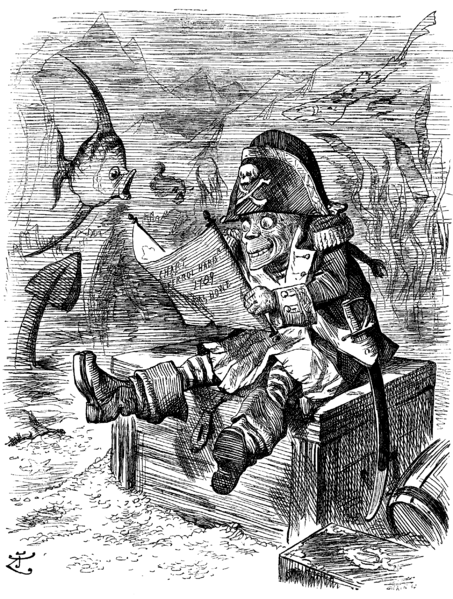
I will rephrase it:
Going to Davy Jones Locker = Going to the Chest of the Ghost of Jonah
AKA " Entering the Abyss of the Carp"
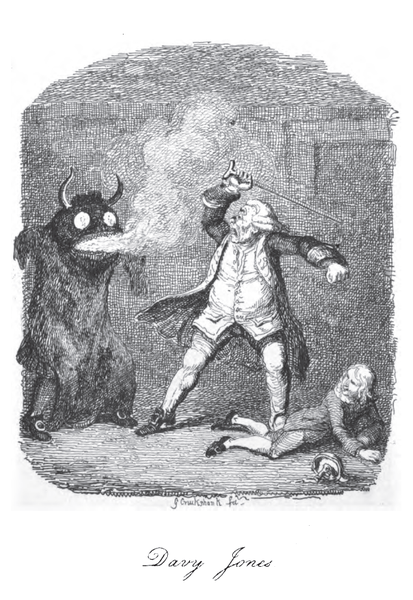
King Neptune and Davy Jone's Locker.
Neptune = Celestial Sea God of the Sky
In the Name of Davy Jones x 3
Who is Moby-Dick the Whale?
What is the story really relating? Just a mere story or a deep complex and rich, mobile mythology?
So even in this film we have concepts like Purgatory and Charon etc.
It links us to this:
Fiddler's Green
So the "Fiddler's Green" has a lot of connotations and very interesting concepts to ponder.
The Sandman (Vertigo)
So we have the Sandman mythology:
Sandman
So he knows History and Mythology pretty well.
Two Umbrellas = Two Trees = Two Canopies
Color Iridescence , can't tell what color he is.
We can connect it with other mythologies to build the full picture.
I told you about Ship Chests earlier, and how it's the important place where the goods are kept.
Especially information.
Well to the Sailors anywhere around the world in pretty much any era or cultural distinction, created religions out of everything around them.
It's almost as if the subconscious manifests in these stories:
Davy Jones Locker

Davy Jones' Locker, also Davy Jones's Locker, is an idiom for the bottom of the sea: the state of death among drowned sailors and shipwrecks.[2] It is used as a euphemism for drowning or shipwrecks which the sailor(s)'s and/or ship(s)'s remains are consigned to the bottom of the sea (to be sent to Davy Jones' Locker).[3]
The origins of the name of Davy Jones, the sailor's devil,[2] are unclear, with a 19th-century dictionary tracing Davy Jones to a "ghost of Jonah".[4] Other explanations of this nautical superstition have been put forth, including an incompetent sailor or a pub owner who kidnapped sailors.
The 1898 Dictionary of Phrase and Fable connects Dave to the West Indian duppy (duffy) and Jones to biblical Jonah:
He’s gone to Davy Jones’s locker, i.e. he is dead. Jones is a corruption of Jonah, the prophet, who was thrown into the sea. Locker, in seaman’s phrase, means any receptacle for private stores; and duffy is a ghost or spirit among the West Indian negroes.
So the whole phrase is, "He is gone to the place of safe keeping, where duffy Jonah was sent to."
—E. Cobham Brewer[4]
I will rephrase it:
Going to Davy Jones Locker = Going to the Chest of the Ghost of Jonah
AKA " Entering the Abyss of the Carp"
An early description of Davy Jones occurs in Tobias Smollett's The Adventures of Peregrine Pickle, published in 1751:[4]
This same Davy Jones, according to sailors, is the fiend that presides over all the evil spirits of the deep, and is often seen in various shapes, perching among the rigging on the eve of hurricanes:, ship-wrecks, and other disasters to which sea-faring life is exposed, warning the devoted wretch of death and woe.
—Tobias Smollett[4]
In the story Jones is described as having saucer eyes, three rows of teeth, horns, a tail, and blue smoke coming from his nostrils.

Davy Jones pictured by George Cruikshank in 1832, as described by Tobias Smollett in The Adventures of Peregrine Pickle[1]
The tale of Davy Jones causes fear among sailors, who may refuse to discuss Davy Jones in any great detail.[citation needed] Not all traditions dealing with Davy Jones are fearful. In traditions associated with sailors crossing the Equatorial line, there was a "raucous and rowdy" initiation presided over by those who had crossed the line before, known as shellbacks, or Sons of Neptune. The eldest shellback was called King Neptune, and Davy Jones would be re-enacted as his first assistant.[9]
King Neptune and Davy Jone's Locker.
Neptune = Celestial Sea God of the Sky
In Robert Louis Stevenson's 1883 novel Treasure Island, Davy Jones appears three times, for example in the phrase “in the name of Davy Jones”.[14][15]
In the Name of Davy Jones x 3
In Charles Dickens's Bleak House (1852–3), the character Mrs. Badger quotes her former husband's work ethic, portraying Davy Jones in a formidable light:
"It was a maxim of Captain Swosser's", said Mrs. Badger, "speaking in his figurative naval manner, that when you make pitch hot, you cannot make it too hot; and that if you only have to swab a plank, you should swab it as if Davy Jones were after you."
—Charles Dickens[13]
Herman Melville mentions Jones in the 1851 classic Moby-Dick:
There was young Nat Swaine, once the bravest boat-header out of all Nantucket and the Vineyard; he joined the meeting, and never came to good. He got so frightened about his plaguy soul, that he shrinked and sheered away from the whales, for fear of after-claps, in case he got stove and went to Davy Jones.
—Herman Melville[12]
Who is Moby-Dick the Whale?
What is the story really relating? Just a mere story or a deep complex and rich, mobile mythology?
The concept of Davy Jones was conflated with the legend of the Flying Dutchman in the Pirates of the Caribbean film series, in which Davy Jones's locker is portrayed as a sort of purgatory, with Davy Jones being a captain assigned to ferry those drowned at sea to the afterlife before he corrupted his purpose out of anger at his betrayal by his lover, the sea goddess Calypso.
So even in this film we have concepts like Purgatory and Charon etc.
It links us to this:
Fiddler's Green
Fiddler's Green is a legendary imagined afterlife, where there is perpetual mirth, a fiddle that never stops playing, and dancers who never tire. Its origins are obscure, although some point to the Greek myth of the Elysian Fields as a potential inspiration.
One sailor's tale published in 1832 speaks of Fiddler's Green as being "nine miles beyond the dwelling of his Satanic majesty".[1] In maritime folklore it is a kind of afterlife for sailors who have served at least 50 years at sea,[2][3] where there is rum and tobacco.[4]
The author Richard McKenna wrote a story, first published in 1967, entitled "Fiddler's Green", in which he considers the power of the mind to create a reality of its own choosing, especially when a number of people consent to it. The main characters in this story are also sailors, and have known of the legend of Fiddler's Green for many years.[8]
In Neil Gaiman's award winning comic book series, The Sandman, Fiddler's Green is a place located inside of the Dreaming, a place that sailors have dreamed of for centuries. Fiddler's Green is also personified as a character as well as a location in the fictional world. This Character in personification is largely based upon casual associations of the English author G. K. Chesterton
So the "Fiddler's Green" has a lot of connotations and very interesting concepts to ponder.
The Sandman (Vertigo)
So we have the Sandman mythology:
Sandman
The Sandman is a mythical character in Northern European folklore who brings good dreams by sprinkling magical sand onto the eyes of children while they sleep at night.
Traditionally, he is a character in many children's stories. He is said to sprinkle sand or dust on or into the eyes of the child at night to bring on dreams and sleep. The grit or "sleep" in one's eyes upon waking is supposed to be the result of the Sandman's work the previous evening.
Hans Christian Andersen's 1841 folk tale Ole Lukøje recorded the Sandman, named Ole Lukøje, by relating dreams he gave to a young boy in a week through his magical technique of sprinkling dust in the eyes of the children. Andersen wrote:
There is nobody in the world who knows so many stories as Ole-Luk-Oie, or who can relate them so nicely.
So he knows History and Mythology pretty well.
But Ole-Luk-Oie does not wish to hurt them, for he is very fond of children, and only wants them to be quiet that he may relate to them pretty stories, and they never are quiet until they are in bed and asleep. As soon as they are asleep, Ole-Luk-Oie seats himself upon the bed. He is nicely dressed; his coat is made of silken fabric; it is impossible to say of what color, for it changes from green to red, and from red to blue as he turns from side to side. Under each arm he carries an umbrella; one of them, with pictures on the inside, he spreads over the good children, and then they dream the most beautiful stories the whole night. But the other umbrella has no pictures, and this he holds over the naughty children so that they sleep heavily, and wake in the morning without having dreams at all.
Two Umbrellas = Two Trees = Two Canopies
Color Iridescence , can't tell what color he is.
I was outside looking at the ducks on the pond, trying to find the two Grey-Blue Cranes that frequent the area...and I was thinking...since everything
is sacred...I should talk about the Sacred Fountain next since that's what I was looking at while I thought of this post.
Spring of Water = Jumping Aqua = Aquarius
The Water Tree and the Pond,
just like the Column + Ouroboros,
or just like the Sun Dial which is the palm and wheel.
The Fountain of (You)th.
That Fountain of Eternal Life
Fountain of Youth
Same Old Story with different names and places.
Baptism into the Abyss of the Sea.
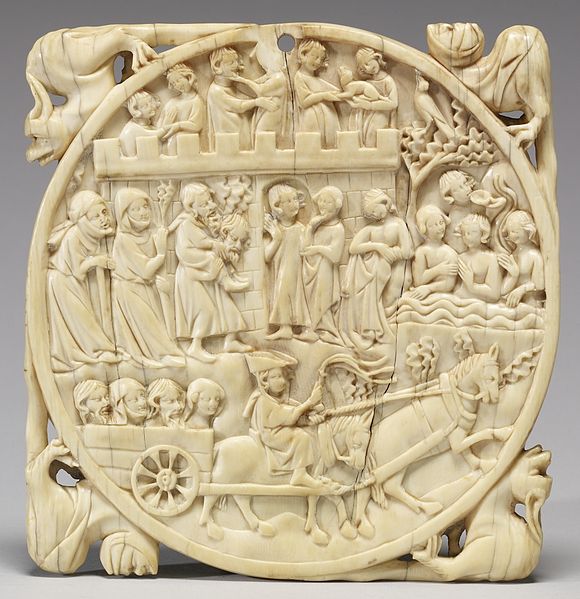
Mirror Case ? Chest - Box
Mirror = Treasure in the Box?
Four Faced God
Medusa in middle with Snake Hair and all it appears?
Those large locks of hair really look like snakes because the end is large as if it were a head.
(Explaining my logic).
A very interesting piece to ponder none-the-less.
That's why Baptism prevents the "Eternal Death".
What is the Universal Panacea??
Panacea = Ace for Everything = Snake Eyes on Every Roll
The "Universal Panacea" is "God's Honey", which is "sweet and sticky", doesn't rot, and alleviates disease and malnutrition. Beware of the Honey's Guardian and it's Stinger/Tooth though!!!
The Anointment of the Golden Oil = The Drip of the Honey Comb of Heaven
Comb, Tooth(brush), and Mirror
It's all about Teeth/Hair and Medusa, something I find very fascinating.
Because Medusa's Hair actually has Teeth due to the Snake aspect.
And Teeth to what? They sever, slice and dice.
So the Bee has a Tooth, the Hive is a Spiraling Shell/Stairway/Snake,
and the Honey is God's Treasure one of the many Panacea.
This is one of the many variants we can derive from the Fountain of Life, the Tree and the Snake.
fountain (n.)
early 15c., "spring of water that collects in a pool," from Old French fontaine "natural spring" (12c.), from Late Latin fontana "fountain, spring" (source of Spanish and Italian fontana), from noun use of fem. of Latin fontanus "of a spring," from fons (genitive fontis) "spring (of water);" cognate with Sanskrit dhanvati "flows, runs."
The extended sense of "artificial jet of water" (and the structures that make them) is first recorded c.1500. "A French fountain-pen is described in 1658 and Miss Burney used one in 1789" [Weekley].
Spring of Water = Jumping Aqua = Aquarius
The Water Tree and the Pond,
just like the Column + Ouroboros,
or just like the Sun Dial which is the palm and wheel.
The Fountain of (You)th.
That Fountain of Eternal Life
Fountain of Youth
The Fountain of Youth is a legendary spring that supposedly restores the youth of anyone who drinks or bathes in its waters. Tales of such a fountain have been recounted across the world for thousands of years, appearing in writings by Herodotus, the Alexander romance, and the stories of Prester John. Stories of similar waters were also evidently prominent among the indigenous peoples of the Caribbean during the Age of Exploration, who spoke of the restorative powers of the water in the mythical land of Bimini.
The legend became particularly prominent in the 16th century, when it became attached to the Spanish explorer Juan Ponce de León, first Governor of Puerto Rico. According to an apocryphal combination of New World and Eurasian elements, Ponce de León was searching for the Fountain of Youth when he traveled to what is now Florida in 1513.
Herodotus mentions a fountain containing a special kind of water in the land of the Macrobians, which gives the Macrobians their exceptional longevity.[1] A story of the "Water of Life" appears in the Eastern versions of the Alexander romance, which describes Alexander the Great and his servant crossing the Land of Darkness to find the restorative spring.
Same Old Story with different names and places.
There are countless indirect sources for the tale as well. Eternal youth is a gift frequently sought in myth and legend, and stories of things such as the philosopher's stone, universal panaceas, and the elixir of life are common throughout Eurasia and elsewhere. An additional hint may have been taken from the account of the Pool of Bethesda in the Gospel of John, in which Jesus heals a man at the pool in Jerusalem.
Baptism into the Abyss of the Sea.

French 14th-century ivory mirror case with a Fountain of Youth
Originally this ivory plaque was the back for a disk-shaped mirror of polished metal. It is carved with a scene of the Fountain of Youth. Elderly men and women walk or travel by cart from the left to the mythical Fountain of Youth at the right. They bathe and reemerge as young couples who enter into the castle at the center and court above upon the battlements. The frame, a circle within a square, has four crouched dragon-like creatures in each corner.
Mirror Case ? Chest - Box
Mirror = Treasure in the Box?
Four Faced God
Medusa in middle with Snake Hair and all it appears?
Those large locks of hair really look like snakes because the end is large as if it were a head.
(Explaining my logic).
A very interesting piece to ponder none-the-less.
The Fountain of Youth serves a metaphor for anything that potentially increases longevity.
That's why Baptism prevents the "Eternal Death".
What is the Universal Panacea??
Panacea = Ace for Everything = Snake Eyes on Every Roll
The panacea /pænəˈsiːə/, named after the Greek goddess of Universal remedy, Panacea, also known as panchrest[citation needed], was supposed to be a remedy that would cure all diseases and prolong life indefinitely. It was sought by the alchemists as a connection to the elixir of life and the philosopher's stone, a mythical substance which would enable the transmutation of common metals into gold.
The "Universal Panacea" is "God's Honey", which is "sweet and sticky", doesn't rot, and alleviates disease and malnutrition. Beware of the Honey's Guardian and it's Stinger/Tooth though!!!
The Anointment of the Golden Oil = The Drip of the Honey Comb of Heaven
comb (n.)
Old English camb "comb, crest, honeycomb" (later Anglian comb), from West Germanic *kambaz (cf. Old Saxon and Old High German camb, German Kamm, Middle Dutch cam, Dutch kam, Old Norse kambr), literally "toothed object," from PIE *gombhos, from root *gembh- "to bite, tooth" (cf. Greek gomphos "a molar tooth," Sanskrit gambha-s "tooth").
comb (v.)
late 14c. (implied in past participle kombid), verb derived from comb (n.); replacing the former verb, Old English cemban, which however survives in unkempt. Related: Combed; combing.
Comb, Tooth(brush), and Mirror
It's all about Teeth/Hair and Medusa, something I find very fascinating.
Because Medusa's Hair actually has Teeth due to the Snake aspect.
And Teeth to what? They sever, slice and dice.
So the Bee has a Tooth, the Hive is a Spiraling Shell/Stairway/Snake,
and the Honey is God's Treasure one of the many Panacea.
This is one of the many variants we can derive from the Fountain of Life, the Tree and the Snake.
reply to post by muzzleflash
Ya and a lot of it has to do with the okangan valley and Kelowna British Columbia where the lake is shaped like a Labie? is that what they call the female parts or as a snake... My family is a puppeted family part of the design of the language and I've been cursed with an identity and appearance of being genetically designed down to the Star in my right palms prints. I'm designed so that my left hand veins are shaped like a penis and my right hand like a vagina... THIS iS NO JOKE! It's like that Orion stuff and a design of the language of flipped, mirroring, rotating symbols of the alphabet and numbers and the appearance of the world so since this has to do with my life and is true as far as I can tell I hope this stuff isn't deleted as it's IMPORTANT AS THEY HAVE BEEN MIND CONTROLLING AND MUTILATING MY EXISTANCE IN SOME KIND OF DEMENTED RITUALS...
So as I said someone created us on specific birthdates gave us specific names lived in certain locations and stuff like that. This whole place as demented language game setup in English about being stupid and breaking up words, mispronunciation and things like that. It's an ORAL game setup to take certain people in and created a story where one apparently does the ORAL as in sexual ORAL game as in MISS pronunciation while the other takes a more miserable path in life.
THIS STUFF IS NOT FUNNY IT'S DISGUSTING THAT SOMETHING WOULD EVEN MAKE THIS WORLD AND PUT CHILDREN ON IT. Google earth should be shut down FOREVER!!! Once you really look at the world and notice stuff.
Anyways, In Revelations 13:18 the verse number hints to one of the identities and I've been given one of these identities. 13x18 = 234 and it's an opposites thing like one side + the other side - like 234 and/+ 432 = 666.
The letter equivalent in English to 13x18 is M and R or MR. The 4:32pm goes along with Orion aligning over Kelowna on 4/21 every year which is why the Deep Water Whore EYEs On happened. Eyes are shaped like vaginas for a reason and part of the design of our language and appearances... This species is DESIGNED to go along with this planet. Basically if you look at the world from many angle it's clearly created as the information presented would have a person believe. If you look around florida for example it looks like a male parts in some perspective and central America looks like a 3 dimension face drawn on the ocean floor and land and where the mouth is also looks like a vagina in some perspective.
Back to the numbers stuff...
02:34 + 04:32 = 06:66 or 6 after 7 / 7:06 / 76 and why the great nebula is named NGC 1976 the year I was born. If you rotate the time/numbers above it comes out to 99 90 a way in roman numerals as IC XC one method of Christs names if I recall. 9:99 is also 10:39 like 103.9 the radio station here and my mothers birthyear 10/3. Just like the other radio station 96.3 / 9:63 10:03 / 10/3...
So anyways go opposites and..
99 90
234 + /- 432
234+99=333
432-90=342
234 = 13x18 = MxR / MR
333 = 5x66.6 = Ex66.6 and together MRE 666 or Mystery 666
432 = 3x8x18 = CHR
342 = 9x19x2 = ISB
Mystery 666 Chris B the 76 / 7:06 / GoF / GooF
Our lives here are mind controlled and scripted to be in certain relationships with certain people with certain names, certain birthdates, live certain places and things like that and the Canadians EH! wanted to arrange my life to take a multimeaning CRAZY! perspective. There's a demented story/game taking place here that's not funny and involved whoring/horroing peoples lives to go along with how the world appears.
I'd try to explain more but no one would believe or want to talk about this stuff anyways as who wants to know there's something very high tech going on with the north americans mind controlling and scripting certain lives in a high tech time game that involves scripting names, birthdates, relationships, careers, and things like that. Kind of like a thank something else out there if your life isn't that bad as something is trashing everything about my life to go along with these name, word and number patterns.
Ya and a lot of it has to do with the okangan valley and Kelowna British Columbia where the lake is shaped like a Labie? is that what they call the female parts or as a snake... My family is a puppeted family part of the design of the language and I've been cursed with an identity and appearance of being genetically designed down to the Star in my right palms prints. I'm designed so that my left hand veins are shaped like a penis and my right hand like a vagina... THIS iS NO JOKE! It's like that Orion stuff and a design of the language of flipped, mirroring, rotating symbols of the alphabet and numbers and the appearance of the world so since this has to do with my life and is true as far as I can tell I hope this stuff isn't deleted as it's IMPORTANT AS THEY HAVE BEEN MIND CONTROLLING AND MUTILATING MY EXISTANCE IN SOME KIND OF DEMENTED RITUALS...
So as I said someone created us on specific birthdates gave us specific names lived in certain locations and stuff like that. This whole place as demented language game setup in English about being stupid and breaking up words, mispronunciation and things like that. It's an ORAL game setup to take certain people in and created a story where one apparently does the ORAL as in sexual ORAL game as in MISS pronunciation while the other takes a more miserable path in life.
THIS STUFF IS NOT FUNNY IT'S DISGUSTING THAT SOMETHING WOULD EVEN MAKE THIS WORLD AND PUT CHILDREN ON IT. Google earth should be shut down FOREVER!!! Once you really look at the world and notice stuff.
Anyways, In Revelations 13:18 the verse number hints to one of the identities and I've been given one of these identities. 13x18 = 234 and it's an opposites thing like one side + the other side - like 234 and/+ 432 = 666.
The letter equivalent in English to 13x18 is M and R or MR. The 4:32pm goes along with Orion aligning over Kelowna on 4/21 every year which is why the Deep Water Whore EYEs On happened. Eyes are shaped like vaginas for a reason and part of the design of our language and appearances... This species is DESIGNED to go along with this planet. Basically if you look at the world from many angle it's clearly created as the information presented would have a person believe. If you look around florida for example it looks like a male parts in some perspective and central America looks like a 3 dimension face drawn on the ocean floor and land and where the mouth is also looks like a vagina in some perspective.
Back to the numbers stuff...
02:34 + 04:32 = 06:66 or 6 after 7 / 7:06 / 76 and why the great nebula is named NGC 1976 the year I was born. If you rotate the time/numbers above it comes out to 99 90 a way in roman numerals as IC XC one method of Christs names if I recall. 9:99 is also 10:39 like 103.9 the radio station here and my mothers birthyear 10/3. Just like the other radio station 96.3 / 9:63 10:03 / 10/3...
So anyways go opposites and..
99 90
234 + /- 432
234+99=333
432-90=342
234 = 13x18 = MxR / MR
333 = 5x66.6 = Ex66.6 and together MRE 666 or Mystery 666
432 = 3x8x18 = CHR
342 = 9x19x2 = ISB
Mystery 666 Chris B the 76 / 7:06 / GoF / GooF
Our lives here are mind controlled and scripted to be in certain relationships with certain people with certain names, certain birthdates, live certain places and things like that and the Canadians EH! wanted to arrange my life to take a multimeaning CRAZY! perspective. There's a demented story/game taking place here that's not funny and involved whoring/horroing peoples lives to go along with how the world appears.
I'd try to explain more but no one would believe or want to talk about this stuff anyways as who wants to know there's something very high tech going on with the north americans mind controlling and scripting certain lives in a high tech time game that involves scripting names, birthdates, relationships, careers, and things like that. Kind of like a thank something else out there if your life isn't that bad as something is trashing everything about my life to go along with these name, word and number patterns.
reply to post by muzzleflash
King James Bible
And the earth was without form, and void; and darkness was upon the face of the deep. And the Spirit of God moved upon the face of the waters.
FACE of the deep could be referring to that of if you look on google earth at the ocean floor maps of the artic ocean there is a face sculpted into the ocean floor maps where the mouth aligns with the pole. Darkness upon the face could be referring to it being covered with ice...
King James Bible
And the earth was without form, and void; and darkness was upon the face of the deep. And the Spirit of God moved upon the face of the waters.
FACE of the deep could be referring to that of if you look on google earth at the ocean floor maps of the artic ocean there is a face sculpted into the ocean floor maps where the mouth aligns with the pole. Darkness upon the face could be referring to it being covered with ice...
Ok if anyone is still following along, I will continue the exposé.
Last I kept mentioning the "Turtle that Dove", and I also drew the correlation between the Columb the Dove (Bird) and the "Column that Dove".
To understand this we need to examine a mass amount of information, but luckily we have everything we need to unlock this most mysterious and puzzling esoteric rhyme scheme.
After investigation, you will realize that there is indeed something to all of this, and the arcane societies of the esoteric have left us many powerful clues in order to unlock the doors of revelation.
Of course we have Columbia (myth), and a whole host of locations currently named "Columbia". We have countless mythological figures associated with Doves throughout history as well.
However the real mystery I want to focus on now is that of the Mystical Turtle.
Before I begin showing my work, I will explain the point of what I am about to post:
---- Explaining the Tower of Babel dissolution of language, the myth of Atlantis, the Flood Myths, etc
---- Examining evidence that reveals the arcane relationships between these topics
The Mystical Turtle "That Dove" is one of the most important symbols with some of the deepest philosophical information encoded etymologically and through mythology worldwide.
Before I get into the meat of the mythology, I want to first explain the current Modern Mythology through one of our popular video games, 'Mario Brothers'.
Bowser is the Mystical Turtle in this video game lore. He "BOWS" thus "DOVE-DIVE".
Bowser = Great Daimao = Great Demon King = Turtle Dragon
MARIO = Mari = Mary = Mars = Ari = Aries = Arian
"Spring" "Jump" "Leap"
Red vs Green
Mushrooms - Canopy - Tree
Yoshi = Chameleon Dragon means "Luck", therefore he is the "Good Luck Dragon".
Perseus (myth) "Persian"
Ok now that's out of the way, let's discuss symbolism-meaning, and global mythology of the "Lost Island", "Mystical Isle", "Hidden Isle", "Mythical Isle".
TV Show LOST:
Lost the TV show is about the "Wandering Island", the "LOST Island", "ATLANTIS"!
The Mystical Wandering Turtle that holds up the world on it's back.
Mythology of LOST
Why the LOST Island is actually a Turtle
Let's take a look at some other mythologies that have been developed from this:
Brasil (Island)
So this Irish variation is of the phantom island flavor, but still retains many of the critical elements of the ancient story, although it remains "clouded in mist" so to speak.
Kumari Kandam AKA Lemuria:
Mu (lost continent)
Avalon of Arthur Legends
"The Isle of Apples", the "Isle of Fortune", the "Fortunate Isle".
"Avalon is a Lost Isle" - no one knows it's location similar to these other mythologies.
The Mists of Avalon
And of course everyone knows about Atlantis but I highly suggest everyone checking that link and the other links for specifics they may want to look into.
In World of Warcraft, a modern video game, the current theme is "Pandaria" which correlates with China essentially, and there is a wandering island that is actually a massive Turtle included as a starting area for the Pandas.
Concepts for consideration:
Earth = Turtle
We Ride the Back through the Celestial Ocean
"The Pillar to Heaven" , "The Isle of Fortune", "The Lost Atlantis".
That "Wandering Island" that is "Round on ALL SIDES???"
Additional Concept for consideration :
You = Turtle - Pearl
Body = Shell - Cell
That means "YOU" are the "Wandering Lost Isle" , the "Pillar to Heaven",
carrying the weight of the world on your back.
Last I kept mentioning the "Turtle that Dove", and I also drew the correlation between the Columb the Dove (Bird) and the "Column that Dove".
To understand this we need to examine a mass amount of information, but luckily we have everything we need to unlock this most mysterious and puzzling esoteric rhyme scheme.
After investigation, you will realize that there is indeed something to all of this, and the arcane societies of the esoteric have left us many powerful clues in order to unlock the doors of revelation.
Of course we have Columbia (myth), and a whole host of locations currently named "Columbia". We have countless mythological figures associated with Doves throughout history as well.
However the real mystery I want to focus on now is that of the Mystical Turtle.
Before I begin showing my work, I will explain the point of what I am about to post:
---- Explaining the Tower of Babel dissolution of language, the myth of Atlantis, the Flood Myths, etc
---- Examining evidence that reveals the arcane relationships between these topics
The Mystical Turtle "That Dove" is one of the most important symbols with some of the deepest philosophical information encoded etymologically and through mythology worldwide.
Before I get into the meat of the mythology, I want to first explain the current Modern Mythology through one of our popular video games, 'Mario Brothers'.
Bowser is the Mystical Turtle in this video game lore. He "BOWS" thus "DOVE-DIVE".
Bowser = Great Daimao = Great Demon King = Turtle Dragon
Bowser, also known as King Koopa, full name Bowser Koopa, is a video game character and the main antagonist of Nintendo's Mario franchise. In Japan, the character is known as Koopa (クッパ Kuppa?)[1] and bears the title of Daimaō (大魔王?, lit. "Great Demon King").[2] In the United States, the character was first referred to as "Bowser, King of the Koopa" and "The sorcerer king" in the Super Mario Bros. instruction manual.[3] Bowser is the leader and most powerful of the turtle-like Koopa race, and has been the greedy archnemesis of Mario ever since his first appearance, in the game Super Mario Bros. His ultimate goals are to marry Princess Peach, defeat Mario, and conquer the Mushroom Kingdom.
MARIO = Mari = Mary = Mars = Ari = Aries = Arian
"Spring" "Jump" "Leap"
Red vs Green
Mushrooms - Canopy - Tree
Yoshi = Chameleon Dragon means "Luck", therefore he is the "Good Luck Dragon".
Perseus (myth) "Persian"
peach (n.)
c.1400 (late 12c. as a surname), from Old French pesche "peach, peach tree" (Old North French peske, Modern French pêche), and directly from Medieval Latin pesca, from Late Latin pessica, variant of persica "peach, peach tree," from Latin malum Persicum, literally "Persian apple," translating Greek Persikon malon, from Persis "Persia" (see Persian).
Ok now that's out of the way, let's discuss symbolism-meaning, and global mythology of the "Lost Island", "Mystical Isle", "Hidden Isle", "Mythical Isle".
TV Show LOST:
Lost the TV show is about the "Wandering Island", the "LOST Island", "ATLANTIS"!
As the main setting of the series, the island boasts a number of unusual properties.
Its location changes at times and it cannot be reached by ordinary means.
The island is surrounded by some sort of barrier which causes disruptions
in the normal flow of time for those who cross it.
Electromagnetic phenomena are common on the island,
and it seems to bestow unusual healing properties to its residents.
The Mystical Wandering Turtle that holds up the world on it's back.
Mythology of LOST
Why the LOST Island is actually a Turtle
One of the writers of LOST once joked that the island may ultimately turn out to be a giant turtle. But what if it wasn't a joke?
Let's take a look at some other mythologies that have been developed from this:
Brasil (Island)
Brasil, also known as Hy-Brasil or several other variants,[1] is a phantom island which was said to lie in the Atlantic Ocean west of Ireland. In Irish myths it was said to be cloaked in mist, except for one day each seven years, when it became visible but still could not be reached.
So this Irish variation is of the phantom island flavor, but still retains many of the critical elements of the ancient story, although it remains "clouded in mist" so to speak.
Kumari Kandam AKA Lemuria:
Kumari Kandam [1] (Tamil:குமரிக்கண்டம், Kumarikkaṇṭam; 30,000 BC – 16,000 BC) is the name of a supposed sunken landmass referred to in the ancient Tamil and Sanskrit Matsya Purana.
Lemuria /lɨˈmjʊəriə/[1] is the name of a hypothetical "lost land" variously located in the Indian and Pacific Oceans.
Mu (lost continent)
Mu is the name of a fictional continent that was once believed to have existed in one of Earth's oceans, but disappeared at the dawn of human history.
The concept and the name were proposed by 19th-century traveler and writer Augustus Le Plongeon, who claimed that several ancient civilizations, such as those of Egypt and Mesoamerica, were created by refugees from Mu—which he located in the Atlantic Ocean.[1] This concept was popularized and expanded by James Churchward, who asserted that Mu was once located in the Pacific.[2]
Avalon of Arthur Legends
"The Isle of Apples", the "Isle of Fortune", the "Fortunate Isle".
"Avalon is a Lost Isle" - no one knows it's location similar to these other mythologies.
The Mists of Avalon
And of course everyone knows about Atlantis but I highly suggest everyone checking that link and the other links for specifics they may want to look into.
In World of Warcraft, a modern video game, the current theme is "Pandaria" which correlates with China essentially, and there is a wandering island that is actually a massive Turtle included as a starting area for the Pandas.
Concepts for consideration:
Earth = Turtle
We Ride the Back through the Celestial Ocean
"The Pillar to Heaven" , "The Isle of Fortune", "The Lost Atlantis".
That "Wandering Island" that is "Round on ALL SIDES???"
Additional Concept for consideration :
You = Turtle - Pearl
Body = Shell - Cell
That means "YOU" are the "Wandering Lost Isle" , the "Pillar to Heaven",
carrying the weight of the world on your back.
Turtle Island (North America)
So here in North America, some of these tribes refer to our own continent as "Turtle Island". Interesting...
World Turtle
We have a World Turtle Mythology too from Europe, "ATLAS".
Atlas
World Elephant
Jormungandr
Turtle = Serpent = Elephant = Atlas
Atlantis the Turtle that Dove under the Sea in a Calamity.
Atlas the Colossal Column that Dove into the Abyss.
Please read this piece carefully:
Herodotus describes "Atlantis", the "Isle of Atlas" as being "Round on all sides", but "exceedingly lofty", and you cannot see it's top because it's in the clouds.
Again "Jack and the Beanstalk" folklore comes to mind in this context.
The Cannibal Giant who eats people (Great Daimyo) - lives in island of mists in celestial sea (sky).
Wife of Giant hides small person to save them from being eaten.
Golden Egg laying Mystical Chicken
Harp that plays by itself? Has a voice? Golden? Harpy!
Cuts down the Column / Stalk ?
Column/Turtle that Dove!
Sacred Bean/Seed = Orphic Egg = Cosmic Green Egg
Tree+Snake = Divine Vines of the Magical Stalk
It is Turtles all the way Down after all isn't it?
The confusion here I believe comes from the complete differing perspectives both sides have in the debate.
Turtle Myth = Allegory / Abstract Philosophy
Scientist Theoretical Approach = Materials Observation
The Key here I believe is to merge both systems into a cohesive synergy, where one can contemplate highly abstract concepts while also conducting a scientific process of hypothesis and experimentation combined with heavy research.
Anyhow, now to Pangu
Interesting how often the name "Pan" appears in all of these names, along with some other common names that pop up in multiple contexts.
Pangu in China = Creater of All in some versions of their myths
Please examine this piece further down:
Pan and Gou, the two survivors of the prehistoric Deluge?
Turtle Island is a term used by several Northeastern Woodland Native American tribes, especially the Haudenosaunee or Iroquois Confederacy, for the continent of North America.[1]
So here in North America, some of these tribes refer to our own continent as "Turtle Island". Interesting...
World Turtle
The World Turtle (also referred to as the Cosmic Turtle, the World-bearing Turtle, or the Divine Turtle) is a mytheme of a giant turtle (or tortoise) supporting or containing the world. The mytheme, which is similar to that of the World Elephant and World Serpent, occurs in Hindu, Chinese, and Native American mythology. The "World-Tortoise" mytheme was discussed comparatively by Edward Burnett Tylor (1878:341).
We have a World Turtle Mythology too from Europe, "ATLAS".
Atlas
World Elephant
Jormungandr
In Chinese mythology the creator goddess Nüwa cut the legs off the giant sea turtle Ao (鳌) and used them to prop up the sky after Gong Gong damaged the Buzhou Mountain that had previously supported the heavens.
Indeed, Wilhelm von Humboldt suggested that the idea of a world-elephant was due to a confusion,
caused by the Sanskrit noun Naga having the dual meaning of "serpent" and "elephant"
(named for its serpent-like trunk), thus representing a corrupted account of the world-serpent.[1][2][3]
The various Hindu myths of the world being carried or enclosed by either a tortoise,
a serpent or an elephant were referred to by Taylor (1878:339).[4]
Turtle = Serpent = Elephant = Atlas
Atlantis the Turtle that Dove under the Sea in a Calamity.
Atlas the Colossal Column that Dove into the Abyss.
Please read this piece carefully:
"After this at a distance of ten days' journey there is another
hill of salt and spring of water, and men dwell round it. Near this
salt hill is a mountain named Atlas, which is small in circuit and
rounded on every side; and so exceedingly lofty is it said to be,
that it is not possible to see its summits, for clouds never leave
them either in the summer or in the winter. This the natives say is
the pillar of the heaven. After this mountain these men got their name,
for they are called Atlantians; and it is said that they neither eat
anything that has life nor have any dreams."
(Source: Herodotus History Book IV, 184.)
Herodotus describes "Atlantis", the "Isle of Atlas" as being "Round on all sides", but "exceedingly lofty", and you cannot see it's top because it's in the clouds.
Again "Jack and the Beanstalk" folklore comes to mind in this context.
The Cannibal Giant who eats people (Great Daimyo) - lives in island of mists in celestial sea (sky).
Wife of Giant hides small person to save them from being eaten.
Golden Egg laying Mystical Chicken
Harp that plays by itself? Has a voice? Golden? Harpy!
Cuts down the Column / Stalk ?
Column/Turtle that Dove!
Sacred Bean/Seed = Orphic Egg = Cosmic Green Egg
Tree+Snake = Divine Vines of the Magical Stalk
It is Turtles all the way Down after all isn't it?
"Turtles all the way down" is a jocular expression of the infinite regress problem in cosmology posed by the "unmoved mover" paradox. The phrase was popularized by Stephen Hawking in 1988. The "turtle" metaphor in the anecdote represents a popular notion of a "primitive cosmological myth", namely the flat earth supported on the back of a World Turtle.
The confusion here I believe comes from the complete differing perspectives both sides have in the debate.
Turtle Myth = Allegory / Abstract Philosophy
Scientist Theoretical Approach = Materials Observation
The Key here I believe is to merge both systems into a cohesive synergy, where one can contemplate highly abstract concepts while also conducting a scientific process of hypothesis and experimentation combined with heavy research.
Anyhow, now to Pangu
Interesting how often the name "Pan" appears in all of these names, along with some other common names that pop up in multiple contexts.
Pangu (simplified Chinese: 盘古; traditional Chinese: 盤古; pinyin: Pángǔ; Wade–Giles: P'an ku; literally "Plate Ancient") was the first living being and the creator of all in some versions of Chinese mythology.
Pangu in China = Creater of All in some versions of their myths
In the beginning there was nothing in the universe except a formless chaos. However this chaos coalesced into a cosmic egg for about 18,000 years. Within it, the perfectly opposed principles of Yin and Yang became balanced and Pangu emerged (or woke up) from the egg. Pangu is usually depicted as a primitive, hairy giant with horns on his head and clad in furs. Pangu set about the task of creating the world: he separated Yin from Yang with a swing of his giant axe, creating the Earth (murky Yin) and the Sky (clear Yang). To keep them separated, Pangu stood between them and pushed up the Sky. This task took 18,000 years; with each day the sky grew ten feet (3 meters) higher, the Earth ten feet wider, and Pangu ten feet taller. In some versions of the story, Pangu is aided in this task by the four most prominent beasts, namely the Turtle, the Qilin, the Phoenix, and the Dragon.
Please examine this piece further down:
This is Professor Qin's reconstruction of the true creation myth preceding the myth of Pangu. Note that it is not actually a creation myth:
A brother and his sister became the only survivors of the prehistoric Deluge by crouching in a gourd that floated on water. The two got married afterwards, and a mass of flesh in the shape of a whetstone was born. They chopped it and the pieces turned into large crowds of people, who began to reproduce again. The couple were named 'Pan' and 'Gou' in the Zhuang ethnic language, which stand for whetstone and gourd respectively.
Pan and Gou, the two survivors of the prehistoric Deluge?
apple (n.)
Old English æppel "apple; any kind of fruit; fruit in general," from Proto-Germanic *ap(a)laz (cf. Old Saxon, Old Frisian, Dutch appel, Old Norse eple, Old High German apful, German Apfel), from PIE *ab(e)l "apple" (cf. Gaulish avallo "fruit;" Old Irish ubull, Lithuanian obuolys, Old Church Slavonic jabloko "apple"), but the exact relation and original sense of these is uncertain (cf. melon).
Avalon is called the Isle of Apples, and here we have some strange etymology.
Abfel? Like Ab Fell? Apples do fall, so that's funny.
Also see PIE *ab(e)l = Abel? Cain's brother? Bizarre.
Hmm will need to look deeper...
melon (n.)
late 14c., from Old French melon (13c.), from Medieval Latin melonem (nominative melo), from Latin melopeponem, a kind of pumpkin, from Greek melopepon "gourd-apple" (name for several kinds of gourds bearing sweet fruit), from melon "apple" (see malic) + pepon, a kind of gourd, probably noun use of pepon "ripe" (see pumpkin).
In Greek, melon was used in a generic way for all foreign fruits (cf. similar use of apple). The Greek plural of "melon" was used from ancient times for "a girl's breasts."
Gourd? Go back to Pangu myth from China linked above, the "Gourd" is present during the deluge.
So this here is a strange correlation, but it gets deeper.
Pomona (n.)
Roman goddess of fruit, from Latin pomum "apple; fruit," of uncertain origin. "Possibly from *po-emo- 'taken off, picked'; *po-omo- or *pe-omo- are also conceivable" [de Vaan]. Or perhaps borrowed from a lost Mediterranean language.
Essentially no one really knows where these words originated from or in what form. It's quite a mystery. But we do have enough clues to find some really crazy stuff.
Atlas
1580s, Titan, son of Iapetus and Clymene, supposed to uphold the pillars of heaven, which was his punishment for being the war leader of the Titans in the struggle with the Olympian gods. The name in Greek perhaps means "The Bearer (of the Heavens)," from a-, copulative prefix, + stem of tlenai "to bear," from PIE root *tele- "to lift, support, weigh." Mount Atlas, in Mauritania, was important in Greek cosmology as a support of the heavens.
Tele = Lift/Support/Weigh
Tlenai = To Bear
Key component "TL".
Atlantic
late 14c., occean of Athlant "sea off the west coast of Africa" (early 15c. as occean Atlantyke), from Latin Atlanticus, from Greek Atlantikos "of Atlas," adjectival form of Atlas (genitive Atlantos), in reference to Mount Atlas in Mauritania (see Atlas). Applied to the whole ocean since c.1600.
Atlantis
mythical island-nation, from Greek Atlantis, literally "daughter of Atlas." All references trace to Plato's dialogues "Timaeus" and "Critias," both written c.360 B.C.E.
Maia
Roman goddess of fertility, Latin Maia, literally "she who brings increase," related to magnus "great" (see magnate). Maia, one of the Pleiades, is from Greek Maia, daughter of Atlas, mother of Hermes, literally "mother, good mother, dame; foster-mother, nurse, midwife," said by Watkins to be from infant babbling (see mamma).
Maia is daughter of Atlas, and mother of Hermes in this myth?
extol (v.)
also extoll, c.1400, "to lift up," from Latin extollere "to place on high, raise, elevate," figuratively "to exalt, praise," from ex- "up" (see ex-) + tollere "to raise," from PIE *tel-, *tol- "to bear, carry" (cf. Greek talantos "bearing, suffering," tolman "to carry, bear," telamon "broad strap for bearing something," Atlas "the 'Bearer' of Heaven;" Lithuanian tiltas "bridge;" Sanskrit tula "balance," tulayati "lifts up, weighs;" Latin tolerare "to bear, support," latus "borne;" Old English þolian "to endure;" Armenian tolum "I allow"). Figurative sense of "praise highly" in English is first attested c.1500. Related: Extolled; extolling.
Garden of the Hesperides
The Garden of the Hesperides is Hera's orchard in the west, where either a single tree or a grove of immortality-giving golden apples grew. The apples were planted from the fruited branches that Gaia gave to her as a wedding gift when Hera accepted Zeus. The Hesperides were given the task of tending to the grove, but occasionally plucked from it themselves. Not trusting them, Hera also placed in the garden a never-sleeping, hundred-headed dragon named Ladon as an additional safeguard.
The Gardens of the Hesperides with the golden apples were believed to exist in some island in the ocean,
Now to the "Turtles":
turtle (n.1)
reptile, c.1600, "marine tortoise," from French tortue "turtle, tortoise," of unknown origin. The English word is perhaps a sailors' mauling of the French one, influenced by the similar sounding turtle (n.2). Later extended to land tortoises; sea-turtle is attested from 1610s. Turtleneck "close-fitting collar" is recorded from 1895.
tortoise (n.)
1550s, altered (perhaps by influence of porpoise) from Middle English tortuse (late 15c.), tortuce (mid-15c.), tortuge (late 14c.), from Medieval Latin tortuca (mid-13c.), perhaps from Late Latin tartaruchus "of the underworld" (see turtle). Others propose a connection with Latin tortus "twisted," based on the shape of the feet. The classical Latin word was testudo, from testa "shell." First record of tortoise shell as a coloring pattern is from 1782.
So the origins of the word "Turtle" are somewhat obscure, and it's clearly a fairly recent word that developed in the last thousand years or so.
Notice the correlations between the Atlas/Atlantic/Atlantis/Atlanta terminology and the "Turtle", as "TL" means "Carry/Bear/Support".
The Tur/Tor is thought to mean "twisting" or "turning".
Next Post I will reveal why Atlas is indeed the Mystical Turtle that Dove.
new topics
-
Watch as a 12 million years old Crab Emerges from a Rock
Ancient & Lost Civilizations: 4 hours ago -
ILLUMINATION: Dimensions / Degrees – Da Vincis Last Supper And The Philosophers Stone
Secret Societies: 10 hours ago -
Just Sick of It! Done! Can't take it anymore!
General Chit Chat: 11 hours ago
top topics
-
Speaking of Pandemics
General Conspiracies: 13 hours ago, 9 flags -
ILLUMINATION: Dimensions / Degrees – Da Vincis Last Supper And The Philosophers Stone
Secret Societies: 10 hours ago, 9 flags -
Watch as a 12 million years old Crab Emerges from a Rock
Ancient & Lost Civilizations: 4 hours ago, 9 flags -
Just Sick of It! Done! Can't take it anymore!
General Chit Chat: 11 hours ago, 8 flags -
Stuck Farmer And His Queue Jumping Spawn
Rant: 13 hours ago, 4 flags
active topics
-
What Is 'Quad Demic'? Mask Mandate Returns In These US States
Diseases and Pandemics • 38 • : NorthOS -
Musk calls on King Charles III to dissolve Parliament over Oldham sex grooming gangs
Mainstream News • 176 • : cherokeetroy -
Just Sick of It! Done! Can't take it anymore!
General Chit Chat • 13 • : JJproductions -
Winter Storm
Fragile Earth • 32 • : Irishhaf -
Joe Biden gives the USA's Highest Civilian Honor Award to Hillary Clinton and George Soros.
US Political Madness • 40 • : marg6043 -
Vehicle Strikes people in New Orleans
Mainstream News • 300 • : Oldcarpy2 -
DONALD J. TRUMP - TIME's Most Extraordinary Person of the Year 2024.
Mainstream News • 61 • : Oldcarpy2 -
Candidate Harris Supporter MARK CUBAN Says Trump Has No Smart-Intelligent Women in His Orbit.
2024 Elections • 88 • : Oldcarpy2 -
Matthew Livelsberger said he was being followed by FBI
Political Conspiracies • 72 • : WeMustCare -
Watch as a 12 million years old Crab Emerges from a Rock
Ancient & Lost Civilizations • 9 • : FullHeathen
